Location: Algonquin Park
Date: May, 2022
Duration: 6 days
It’s been several years since my last backcountry trips. Although I had full intentions on returning to spend more time exploring and fishing in recent years, my plans were ultimately derailed by a major knee injury, a canoe partner moving away, COVID and… several other poor excuses.
With my knee repaired, rehabbed and stronger than ever – I decided to scrap the excuses and head out on my own solo backcountry adventure for the first time this May. This wouldn’t be your Average Joe’s first solo backcountry adventure though – but a 6 day, ~70 km loop (closer to 100 km with double carries and detours) with 12 portages, one being the longest in the park (5.5 km). The goal, aside from enjoying the scenery and peace and quiet, would be getting into some brookies.
You could definitely argue that I overdid it for my first solo trip – my family certainly thought so. But, what I lacked in experience, I made up for in (a lot of) planning and preparation. I poured over maps, created detailed day by day trip, time and meal plans – and attempted to perfect my gear/load as much as possible. However, try as I did, I simply could not find a way to cut it down enough to allow for single carries on the portages.
My route would be : Opeongo ➔ Proulx ➔ Big Crow ➔ Lavieille ➔ Dickson ➔ Opeongo (with a bunch of smaller lakes and rivers in between). With double carries, I would be covering a total of 30 km on the portages alone. I’d start off on a couple lakes that I visited in the past, continuing on to some of the more picturesque areas of the park, with some opportunities for casting a fly rod. Given I was doing this solo in May, when the water was still cold, I again opted to use Algonquin Outfitters’ water taxi service to bypass Lake Opeongo.
What follows is a fairly detailed recollection of my trip. It’s going to be a long one, so grab a cup of coffee before diving in.
Day 1: Opeongo to Big Crow
I left home early AM and arrived at the Algonquin Outfitters Opeongo access point plenty early to set off for the north arm of Lake Opeongo by 12:00 noon. I picked up a couple last minute items in the store while they strapped the canoe I rented (a 15′ Swift Solo Keewaydin) to the water taxi. As I had come to expect from previous backcountry trips, the weather was predictably cold and rainy on my first day. I think it’s a way for mother nature to prepare you for what’s to come… if you can survive and enjoy the first day, the rest of the trip will probably be a breeze!
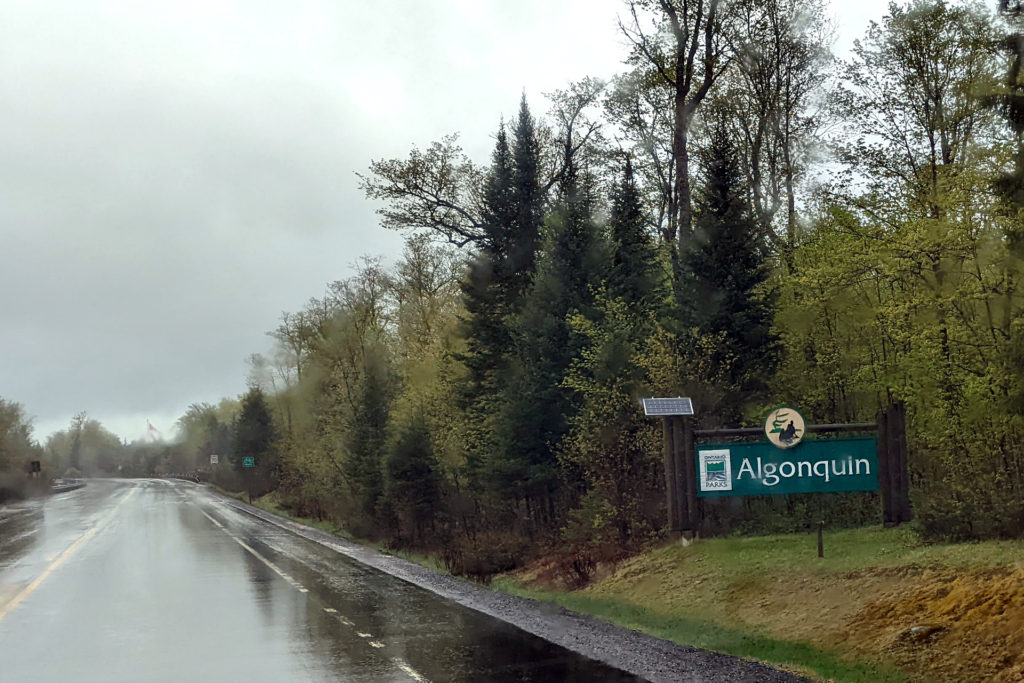
After being dropped off at my first portage, as the water taxi was leaving, I quickly realized that I was missing the paddle I had rented. I brought my own double blade paddle as well (to make travel on larger and windier lakes easier), but wanted the insurance of having an extra paddle, as well as the opportunity to practice my solo paddling.
There were a bunch of people at the portage waiting to be picked up by the same water taxi that dropped me off, and thankfully I was able to find someone who had also rented a canoe and paddle from AO. They were due to be picked up around 1:30, so I went ahead and did the first portion of my double carry, then waited around for the water taxi to come back so I could persuade them to lend me the paddle. This turned out for the better, as I chatted up a couple friendly guys at the portage, gaining some useful insights for my trip. It also happened that the fellow I was grabbing the paddle from, was also a fly fisherman from the GTA, who frequents the Credit River. A strange coincidence, but if you do manage to read this Russell, thanks for the paddle, tips and chat!
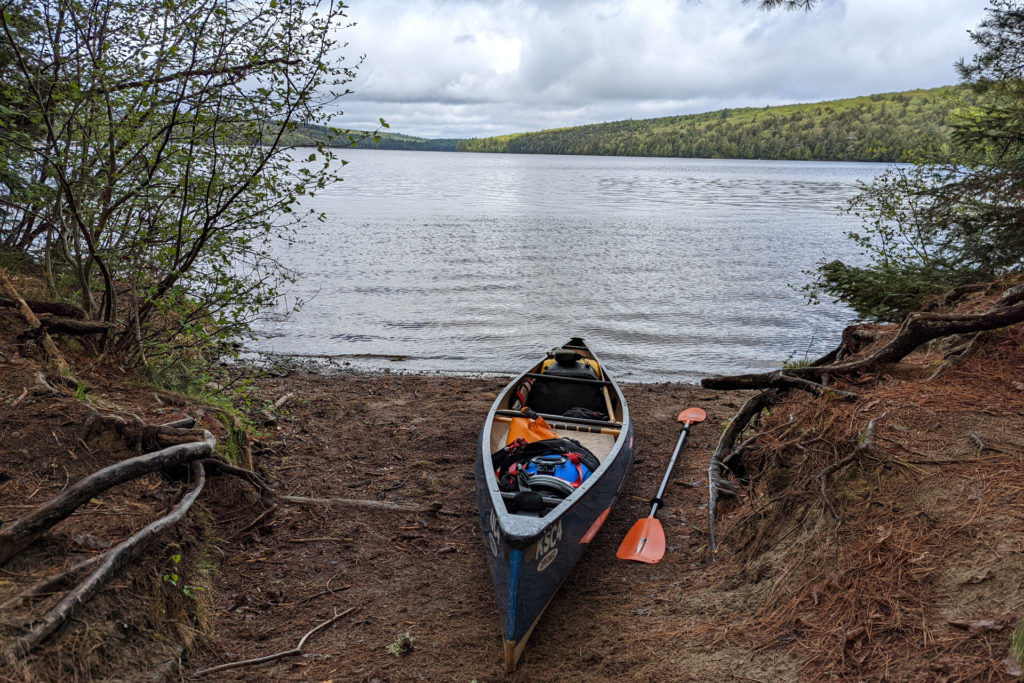
I’ve done the Proulx portage twice before, so there were no real surprises here. It’s approximately 1.4km, with a bit of uphill. Keeping in mind that I was going to be double carrying every portage this trip, that means on this particular portage I would cover that distance 3x – for a total of 4.2km. This was my first time double carrying and although it results in a lot more distance travelled, the lighter loads and walk back without gear is refreshing at times. That said (spoiler), the double carry is a LOT less appealing for the longer portages, like the one I did on my last day.
The cold weather kept the bugs at bay and it was 2:00 by the time I reached Proulx Lake – 2:30 after messing with my gear and figuring out the best loading configuration for the canoe. I set off paddling into a fairly strong sidewind, which would soon turn into a headwind. This would become a theme for most of the week, with the wind direction seeming to shift with my own direction so that I was paddling into it more often than not. I was thankful for having brought the double blade paddle though, as it made paddling in such conditions more manageable.
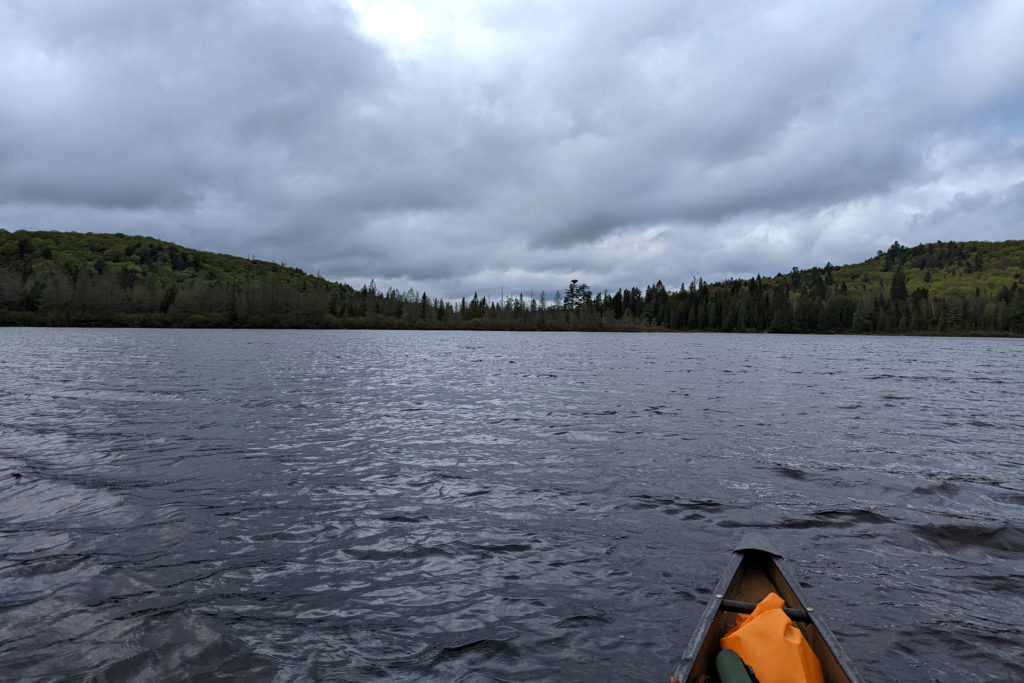
After stopping for a late lunch at a campsite on Proulx, I rounded a corner to head northwest towards Crow River and was greeted with a much stronger direct headwind. I passed one canoe going in the opposite direction, being pushed along effortlessly by the wind, while I struggled to make forward progress even with my double blade.
I arrived at the entrance to Crow River at 4:30, switching to my single blade for the river paddle. Although I’m a fairly novice solo paddler, this was much more enjoyable and gave me time to practice my J-Stroke. The river in its current state was not quite as tranquil as I remembered it. On my previous trips, which were later in the season, the banks were more grown in and the water as smooth as glass. A fairly uneventful hour long paddle brought me to the end of the Crow River at 5:30.
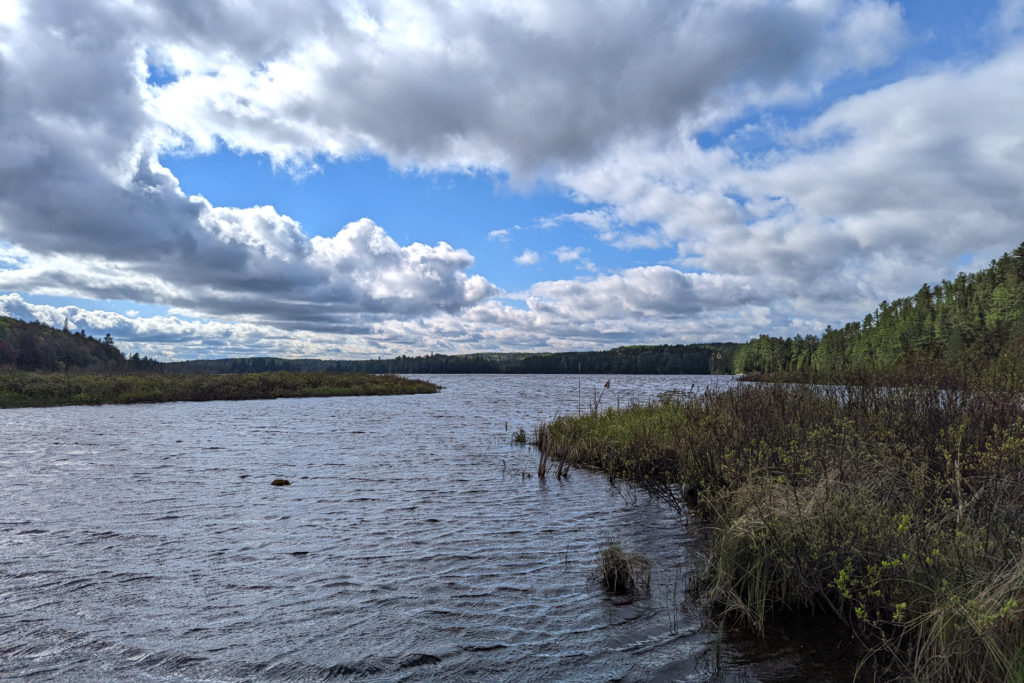
This section of Crow River empties into Little Crow Lake, which is perhaps the most insignificant lake of my entire trip. I’d budgeted about 2 hours and 20 minutes to paddle Crow River and Little Crow Lake (accounting for stops), but finished both in 1.5 hours – arriving at Big Crow Lake at 6:00 pm. This was my final destination for the day and I arrived slightly later than expected due to the delays at the portage. Big Crow was exactly how I remembered it – pretty, but treacherous for its size. For some reason, this lake, despite not being very big, kicks up some seriously large waves. You won’t see many pictures of large waves in my post, because I generally don’t stop to take pictures in rough water.
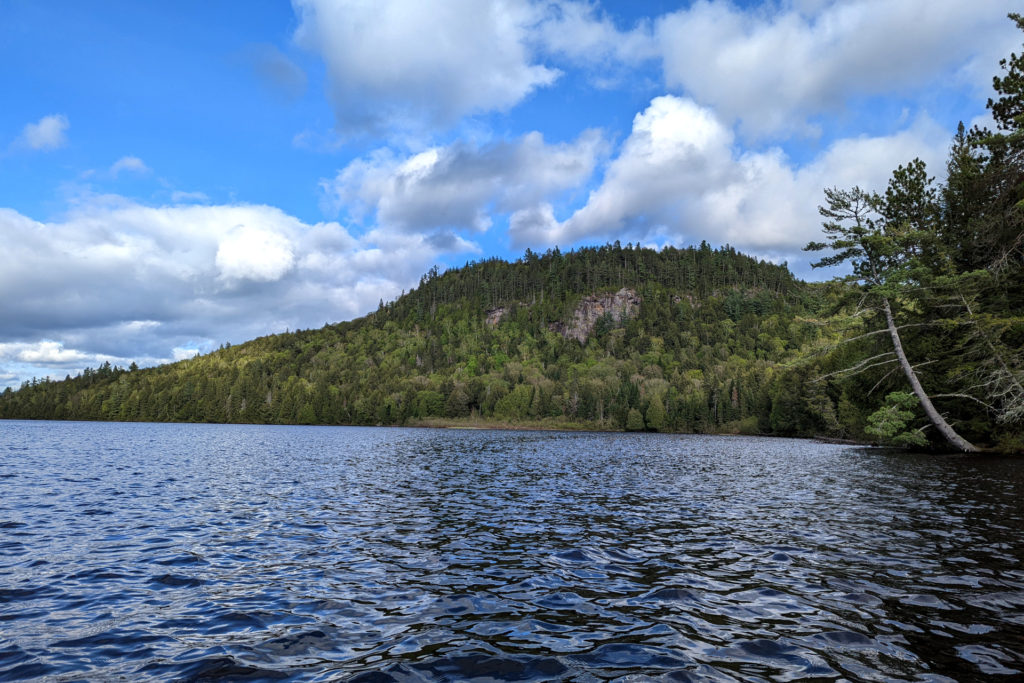
Against my better judgement, I turned down a couple campsites on the north shore of the lake, which were nicely protected from the wind – and I headed towards the beach sites which are directly adjacent to the next section of the Crow River that I would be paddling in the morning. This was my second mistake of the day (the first being forgetting the single blade paddle), as it was probably more of a risk than I should have taken. That said, I stayed close to shore and took my time navigating the lake to my destination campsite. Thankfully, it was unoccupied when I arrived at 7:00 pm.
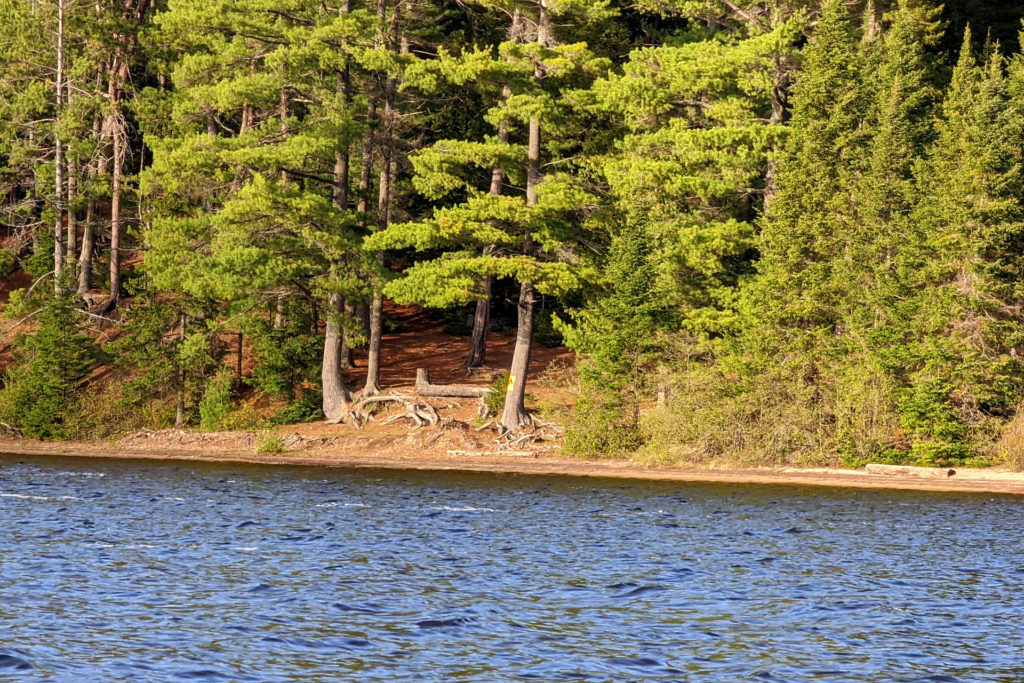
I was carrying some new gear for this trip – specifically, a hammock and its many accessories. This was my first time setting it up and although it took me a couple nights to perfect the setup and sleeping arrangement, it worked out wonderfully. That said, it took me quite a while to find a suitable bear hang, setup the hammock and get a fire going the first night. Bear hangs were an especially annoying process the entire trip, as most campsites were nearly impossible to find a suitable tree/branch to hang from. Technically I was probably overdoing it, since I was carrying a blue barrel AND OpSaks (odour proof ziplocks). There were a couple nights where I could not find a suitable tree, so simply walked the barrel away from camp and attached it to the trunk a tree. This time consuming process is definitely something I want to refine on my next trip, possibly opting for a UrSack/OpSak combination to save weight, space and time.
Long story short, I was late setting up camp and eating and after winding down by the fire, I wasn’t in bed until 1 am. I was treated to the sounds of wolves howling before bed – in the same general vicinity as me, though thankfully not too close.
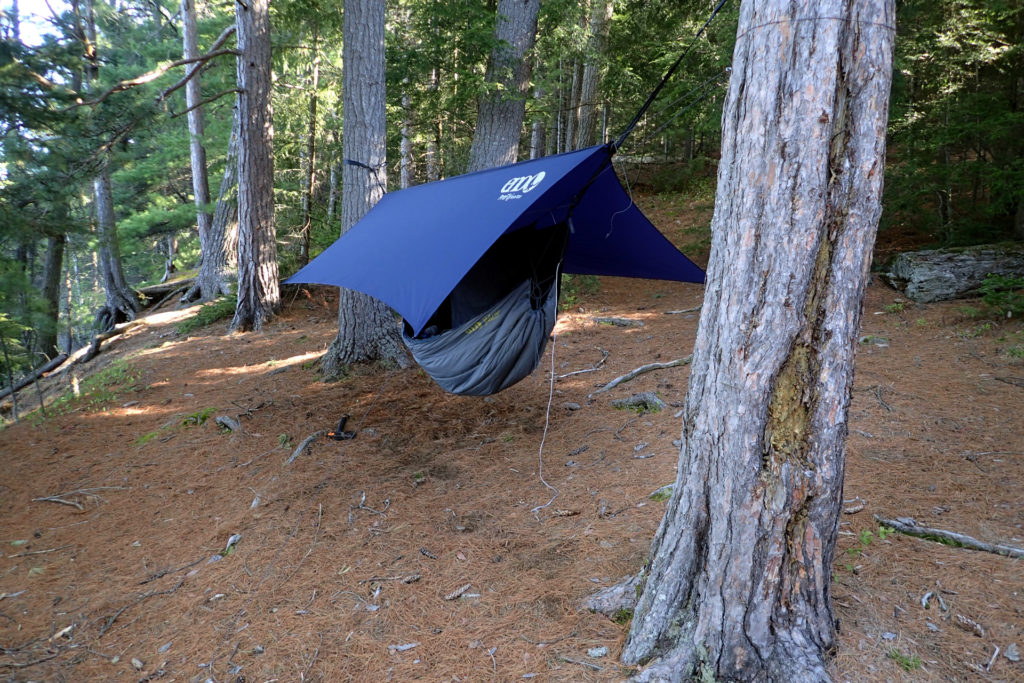
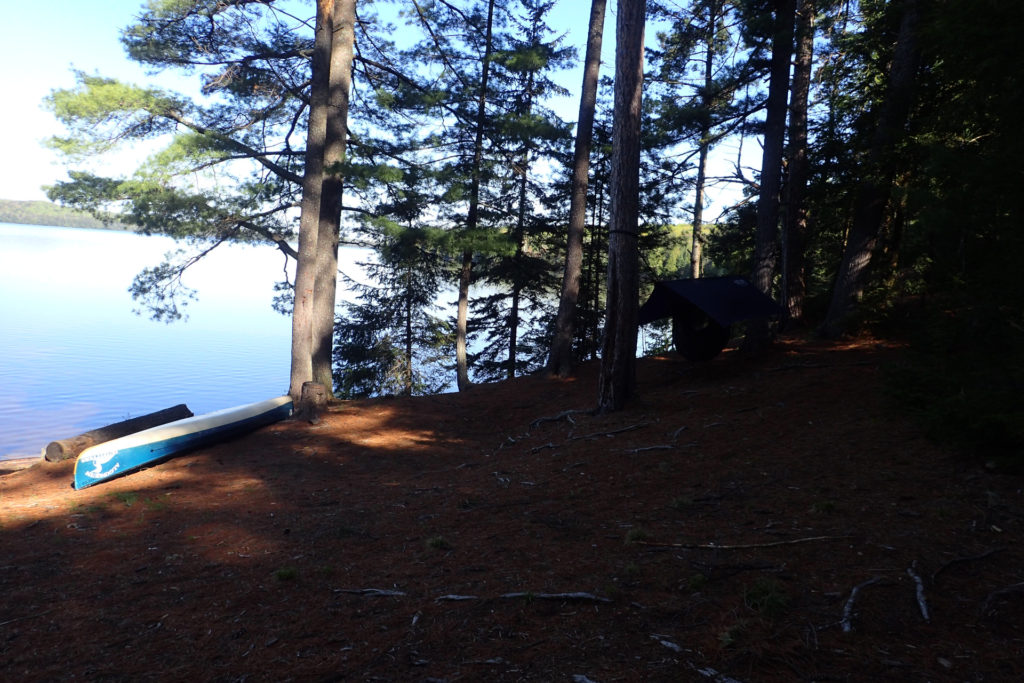
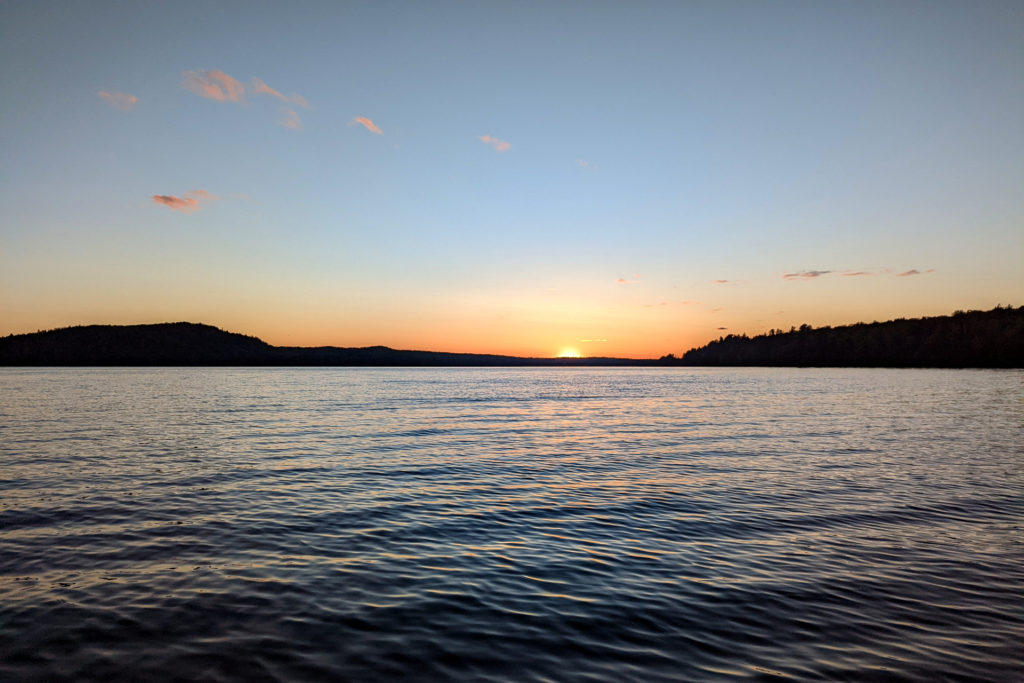
Day 2: Big Crow to Crow River
I awoke at 8:30 am, later than planned, due to my late night. Fortunately, my overplanning allotted generous extra time each day, although later starts did mean less time to explore and fish on my travel days. Unfortunately, when I went to top off my phone charge in the morning, I realized that although I brought both of my battery banks, I failed to pack any USB cables to charge with. This meant that for the next 5 days, my phone would remain powered off except when I wanted to check the GPS or text my wife (via the Garmin InReach Explorer app). Always something… Note to self: add usb cables to gear/pack list for the next trip!
A combination of a near zero degree overnight low, as well as a smaller blunder with my hammock underquilt setup, resulted in a not-too-toasty back during my sleep. I think I fixed the underquilt issue for the remaining nights, as I was much warmer afterwards. After a lazy morning breakfast and camp teardown/pack-up, I set off around noon for the Crow River. The extra time I gained by paddling across Big Crow the night before meant that I was already at the entrance to the river.
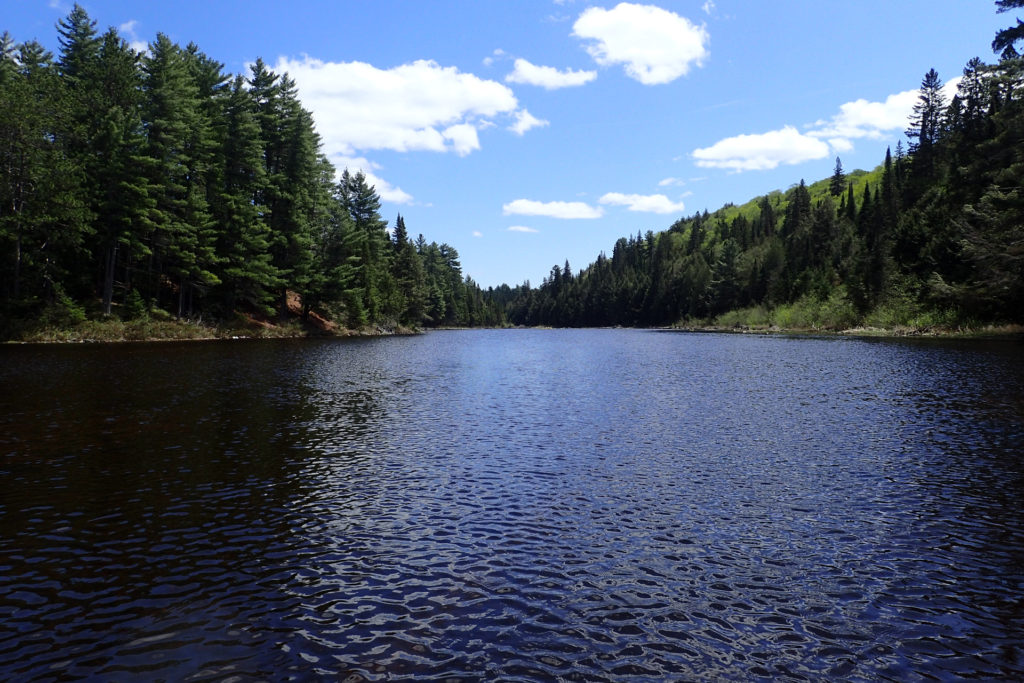
I had paddled a small portion of this river on a previous trip, but never farther than its first portage. I only needed to cover about 7.5 km along the Crow today, to the only campsite on the river. There were 3 portages on the way – two shorter and one that was 1.2 km. This was a very enjoyable travel day, slowly meandering along the river with the single blade paddle. I took my time, but didn’t really get to spend a lot of time fishing as I didn’t want to get to camp too late.
I did catch my very first Algonquin brookie along this section, but for some reason I didn’t bother taking a picture of it. Perhaps that’s because it looked just like any other brookie I catch back home – about 8″ and lots of pretty colors.
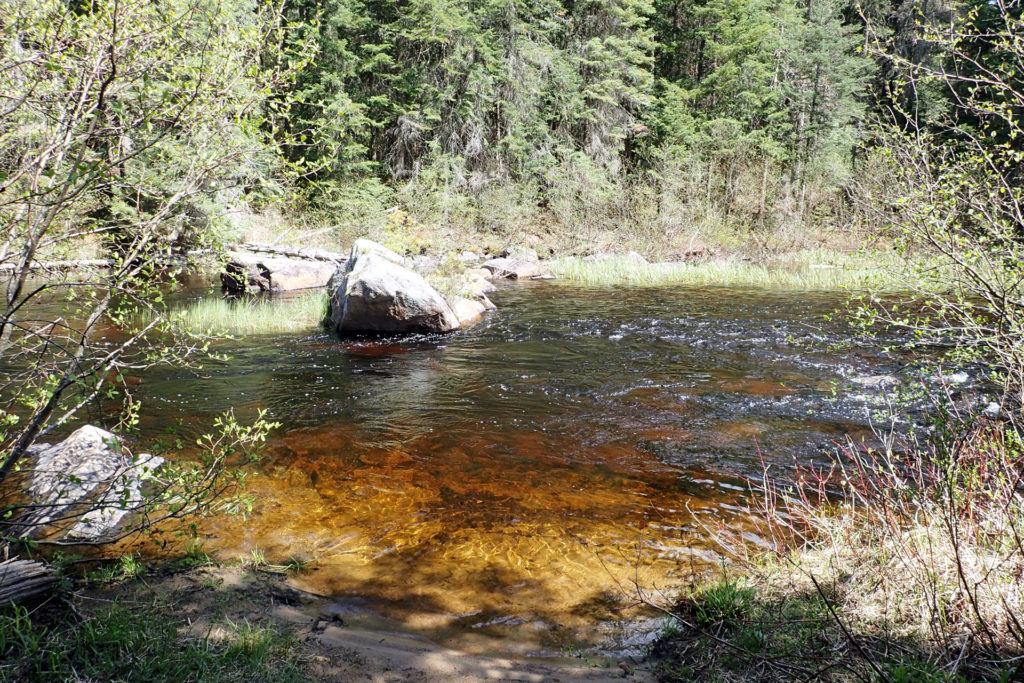
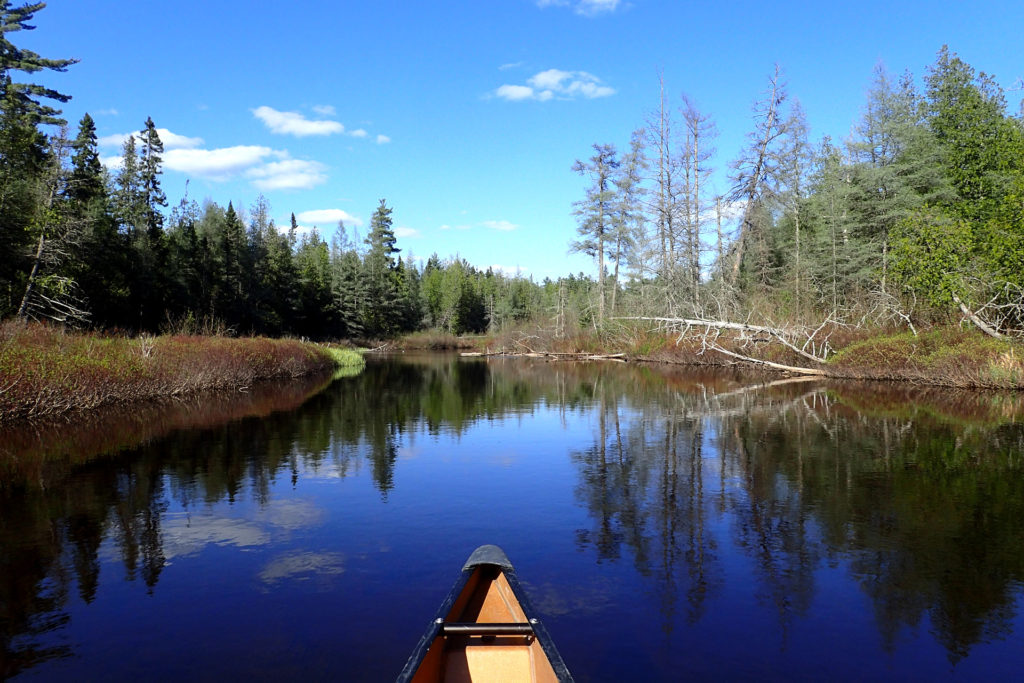
One area I definitely still need to improve, is load/unload times at portages. I was still fairly disorganized with the gear and didn’t really account for the extra time at each portage take out and put-in. I did improve on this by the end of the trip however. One small annoyance with the solo boats is that they have a removable yoke. This means that each time you start and end a portage, you need to attach and unattach it. It gets old rather quickly. That said, the newer Swift solo boats have a much simpler looking system for this.
By mid afternoon, with the sun fairly bright overhead, the black flies came out in good numbers. They were pesky, but thankfully weren’t biting yet, so no bug jacket or deet was needed.
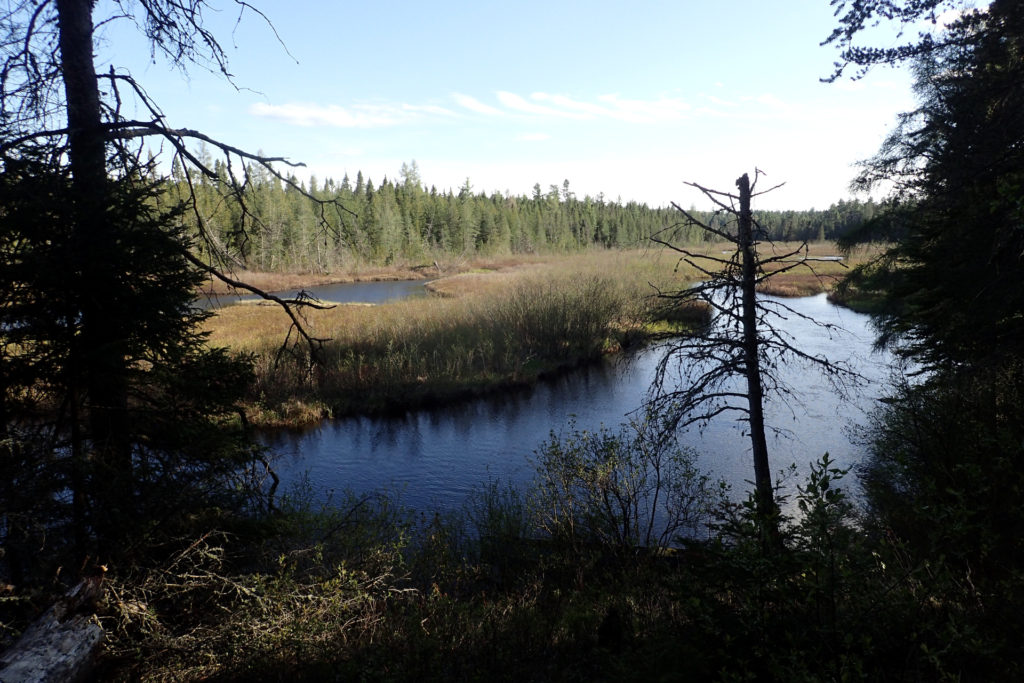
I arrived at the Crow River campsite at 6:00 pm. Once again I wasted lots of time looking for a food hang and setting up camp. I took a short paddle and then had a light dinner back at camp. Just before dark, I began hearing a weird/creepy noise coming from the trees behind my campsite. I couldn’t figure out what it was – it sounded like the entire forest was vibrating… it was very strange. Eventually I spotted a large bird, continually flying between trees and the ground. The noise seemed to coincide with the bird’s flight. I’m not really a bird person, so I had no idea what type of bird it was. It was a bit odd how it completely ignored my presence and felt no need to separate itself from me.
I relaxed a bit before calling it a night at a more respectable 11:30 pm. I slept more comfortably this time, with the slightly warmer temps and become more accustomed to the hammock. Though, I still managed to sleep in until 8:30 am again. I think Day1’s paddling through heavy winds, combined with the fairly poor sleep that night had caught up with me. I figured it was better to be well rested than to paddle tired all day – I’m still not sure this was the best decision, because it continued to eat into my fishing time.
The bird was back behind my campsite again in the morning and this time I managed to snap a picture of it.
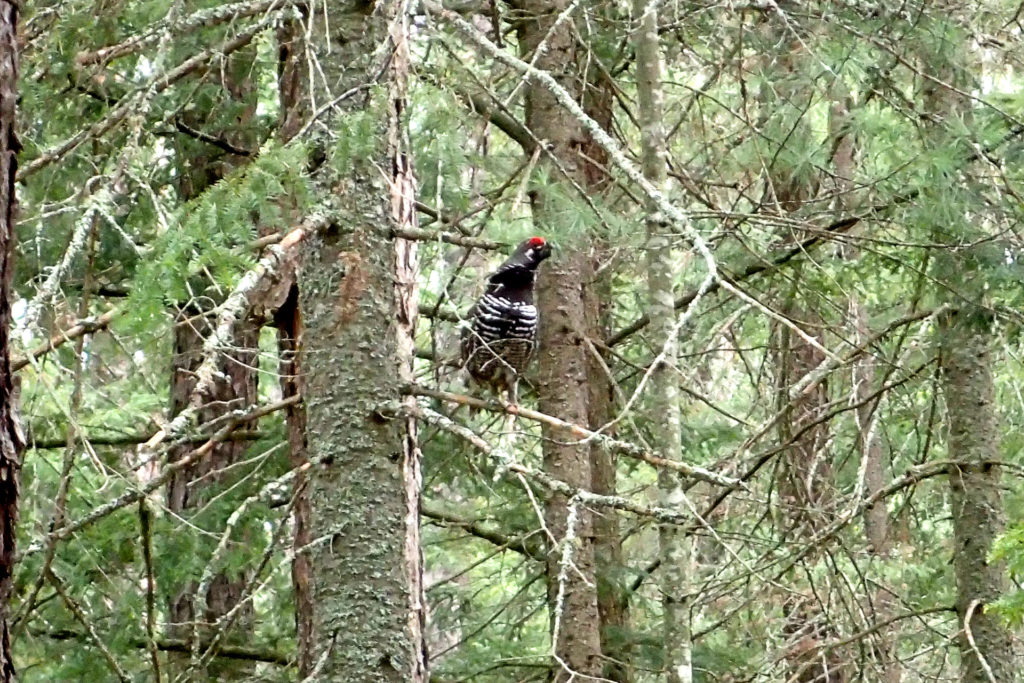
Turns out, it was a Spruce Grouse (a male I think) – and supposedly they make this loud fluttering/vibration noise as part of their courtship display. Apparently they are also known to not be frightened by humans, due largely to not being targeted by hunters.
Day 3: Crow River to Lake Lavieille
Where Day 2 was a light travel day, Day 3 turned out to be much less so. I was heading to Lake Lavieille (my main destination) and the campsite I was aiming for would be a good paddle across the lake once I got there. My plan was to spend two nights on Lake Lavieille, giving me a full day on Day 4 for exploring and fishing.
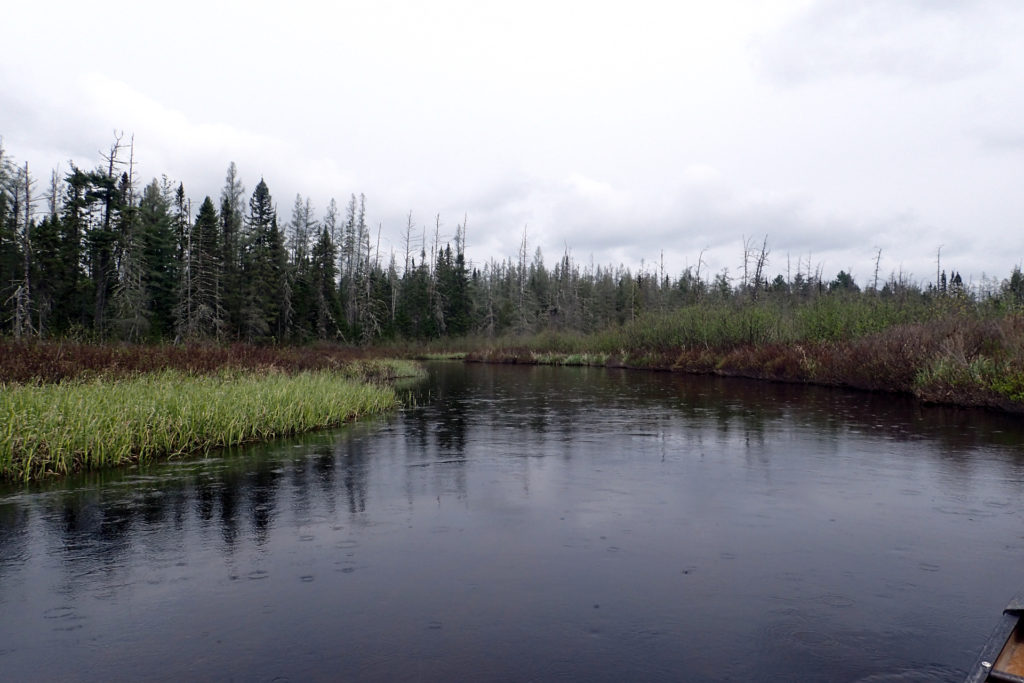
The rain was back today, although it wasn’t nearly as miserable as it was on Day 1. I left camp at 11:00 am and made my way downstream towards the 4 smaller portages on the Crow River before entering into Crow Bay. The river in this section had more character than the first half of the Crow – and I do wish I gave myself more time to spend on it.
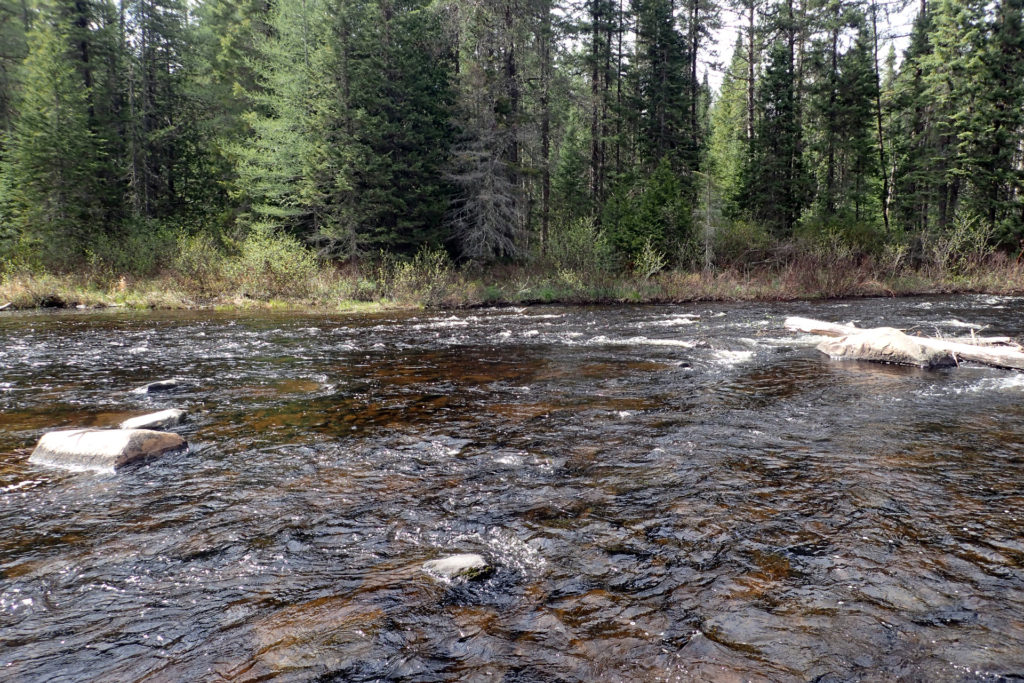
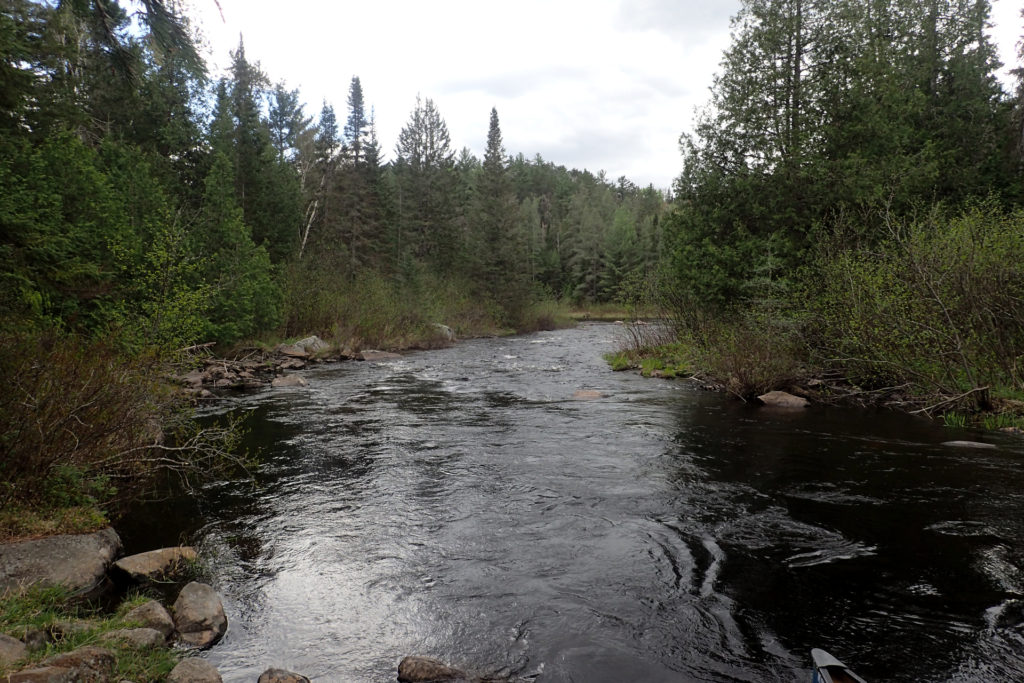
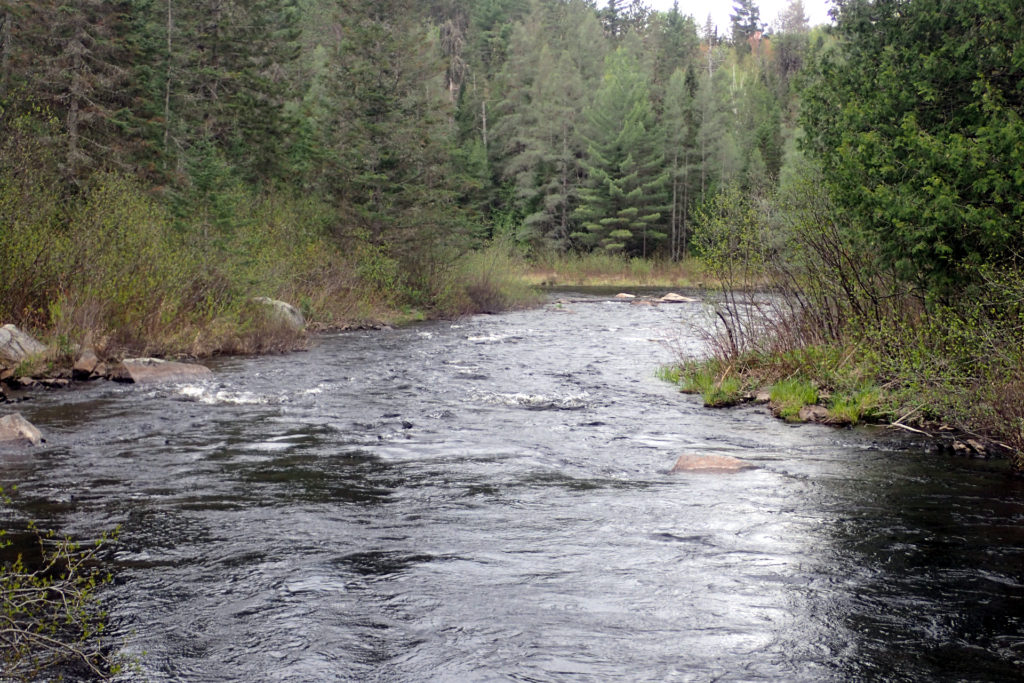
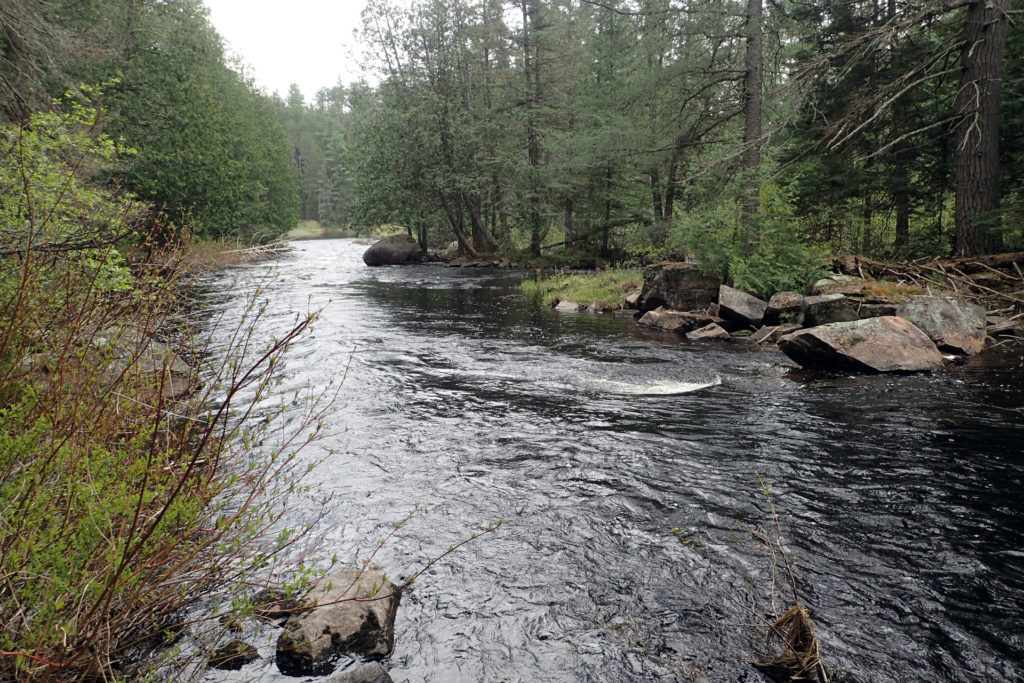
I stopped to fish a few times on my way to Crow Bay, catching a few smaller brookies and hooking up and subsequently losing a couple larger ones.
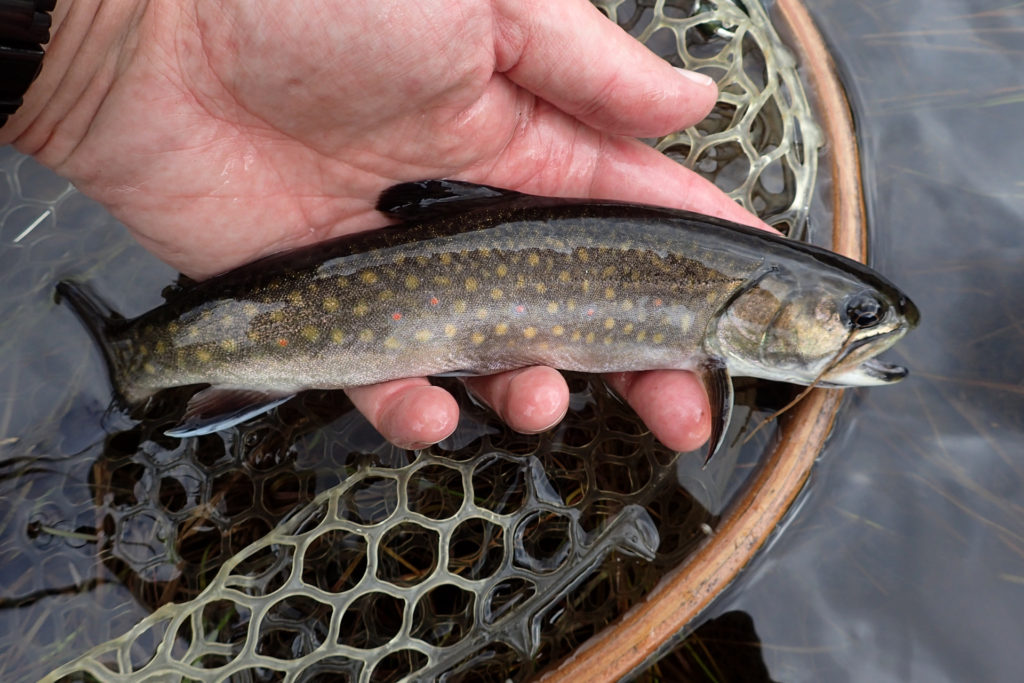
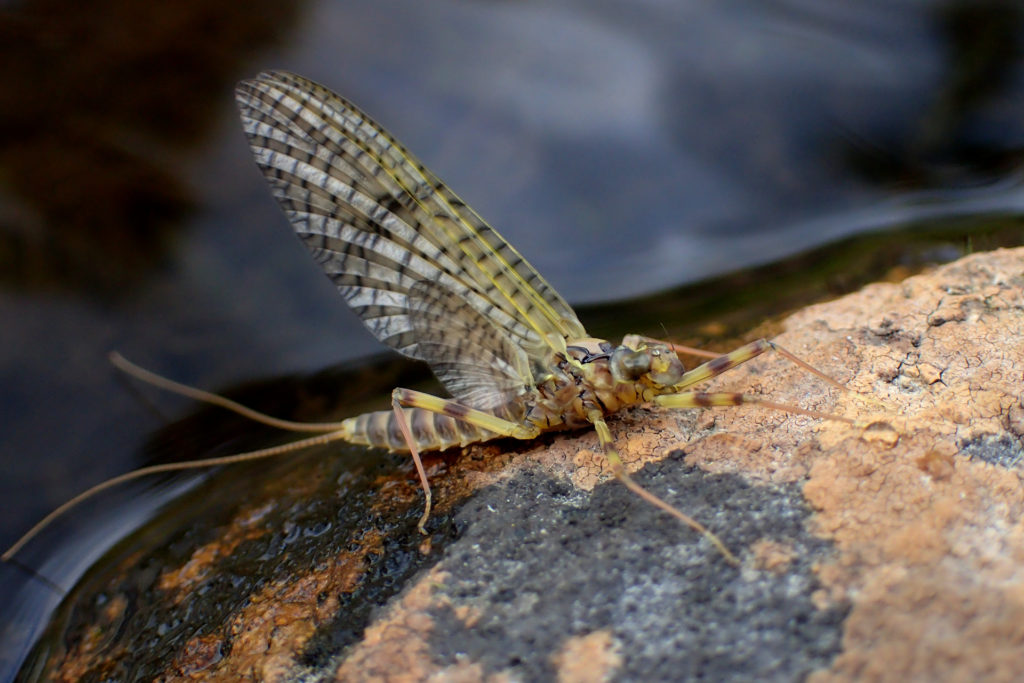
The portages along this section were short and sweet, though one in particular (where I had met another couple) was heavily grown in. There were lots of downed trees across most of my portages, that I guess hadn’t been cleared yet this year, but nothing that was too big of an issue. A couple portages actually weren’t identified by signs at all and I almost missed them. When I did find them, I found the remnants of signs on the ground under the trees they were supposed to be hung on.
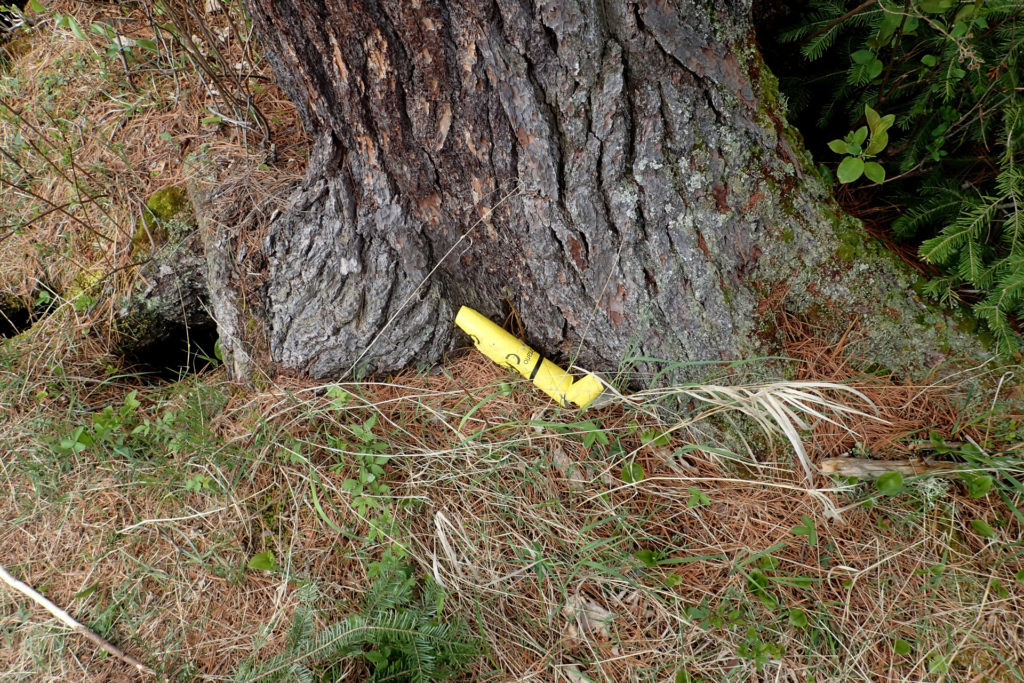
I continued to improve on my portage load/unload times today and developed a better system for carrying and managing my gear.
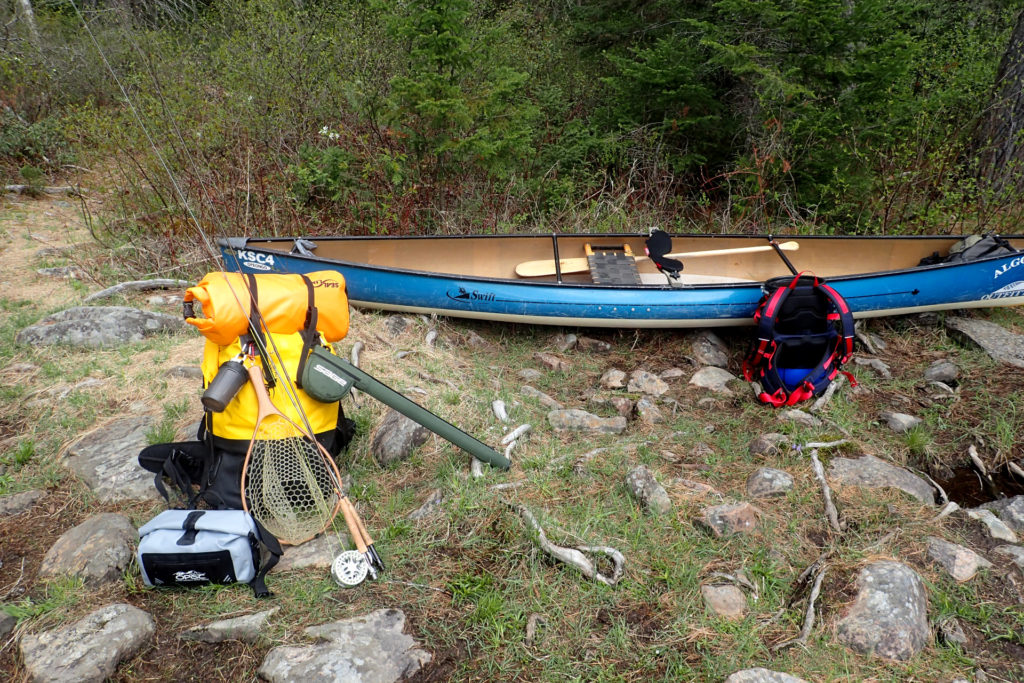
I’d brought two fly rods on this trip, because I happen to own every weight rod except the typical (and ideal for this trip) 5 weight. Actually, that’s not entirely true – I do own a couple 5 weights, but they’re 20+ year old beginner rods from when I first started out and not much of a joy to cast. So I brought a 3 weight for rivers and a 6 weight for lakes (and/or for casting heavier streamers in rivers). Let’s jus say, am I ever glad I decided to bring both rods, because at one of my portage take-outs, I carelessly rested both of my assembled rods next to the canoe on the side of the river. And guess what’s likely to happen when you rest green fly rods on the ground and then start moving around potentially forgetting they’re there? Yep – you step on them!
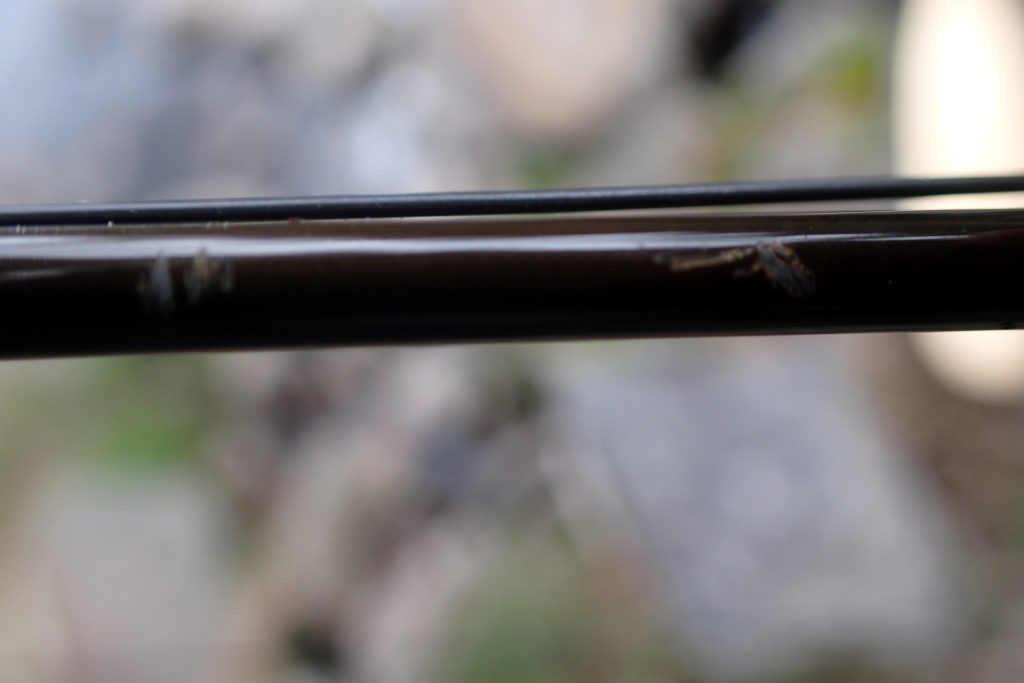
As I was fumbling around organizing my gear, I heard an audible “crunch”. When I looked down, I was stepping directly on top of my 6 weight fly rod, with my toes about a quarter inch away from my 3 weight. My heart sank… Inspecting the rod, I could see some visible scratch marks and damage. It survived a little stress test, but based on previous experiences, I had a real strong feeling that it would simply snap when casting a large fly (or catching a fish) later. And that’s exactly what happened the next time I cast a streamer with it.
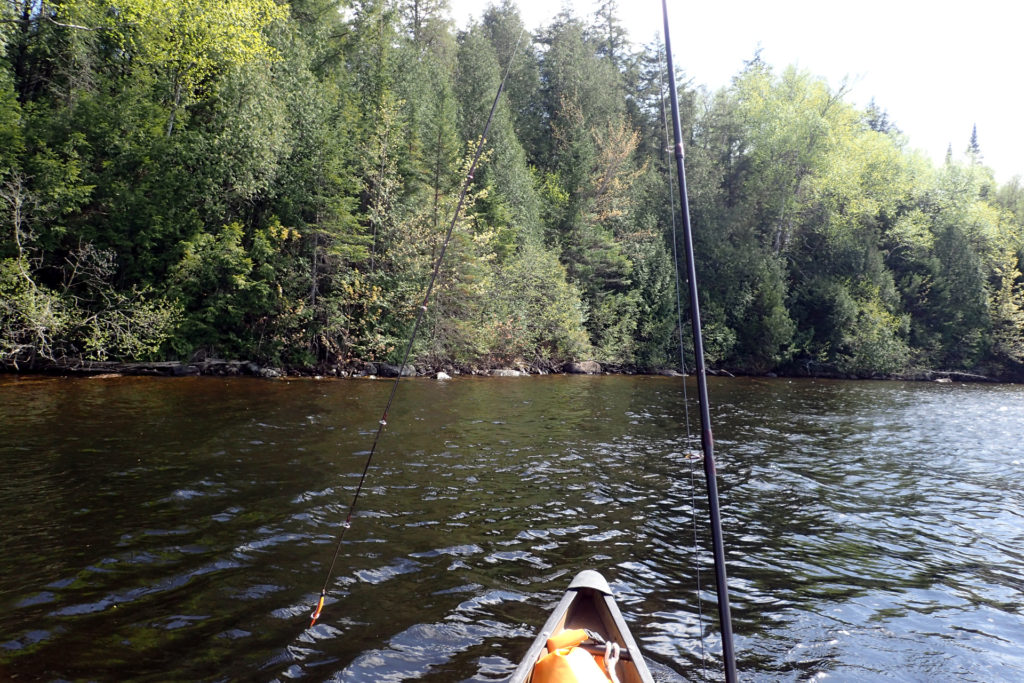
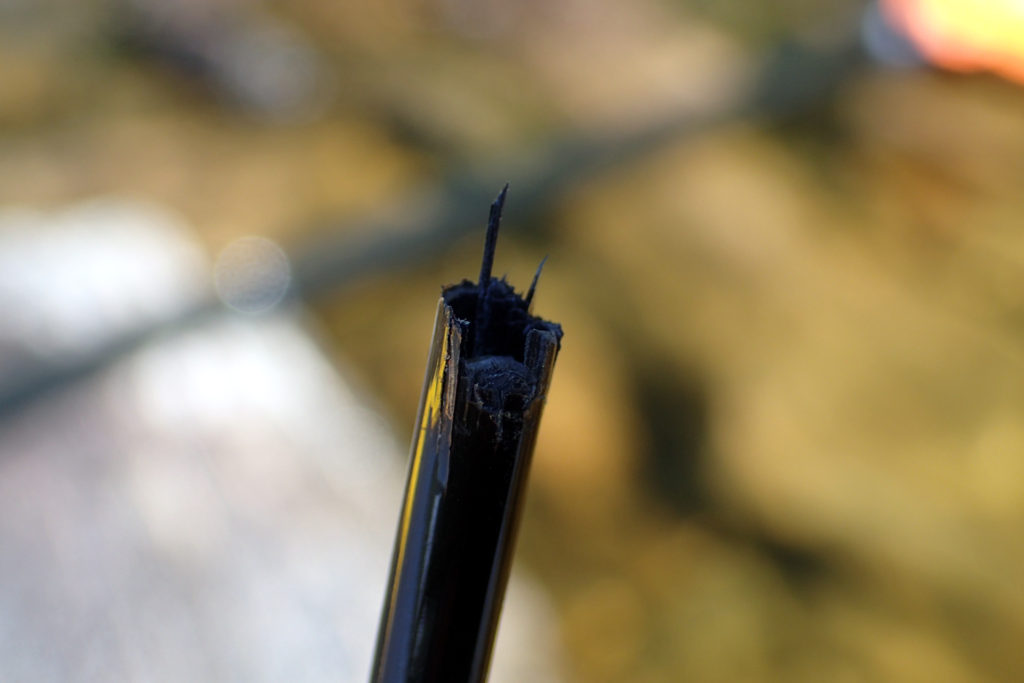
After the last portage, as I made my way towards Crow Bay, the river widened and became more marshy in areas. It was 5:20 pm by the time I exited the river and entered Crow Bay.
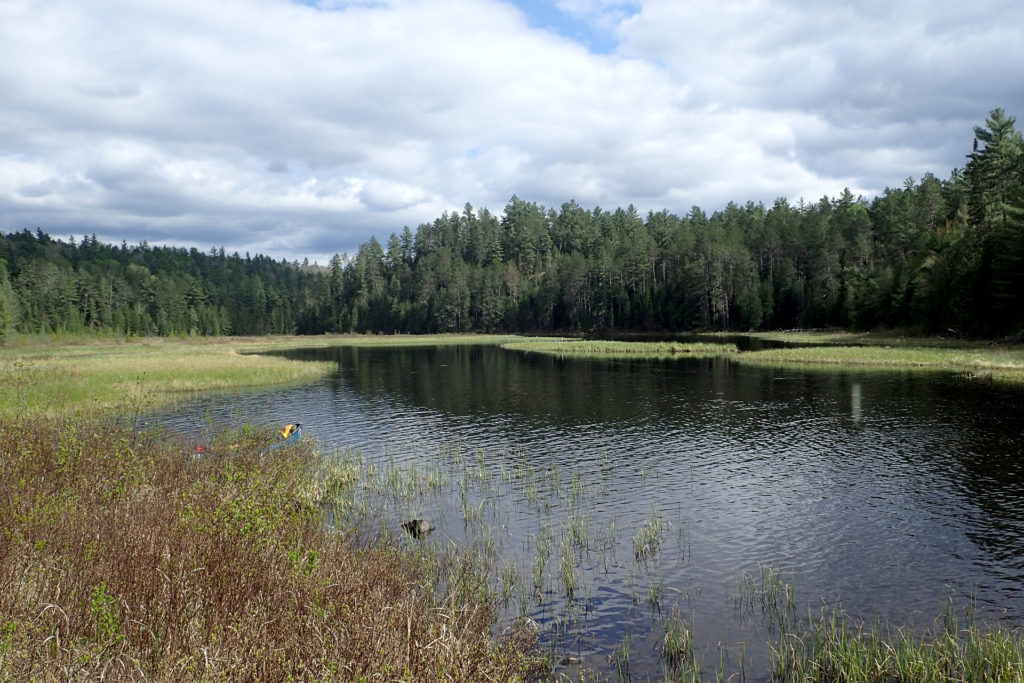
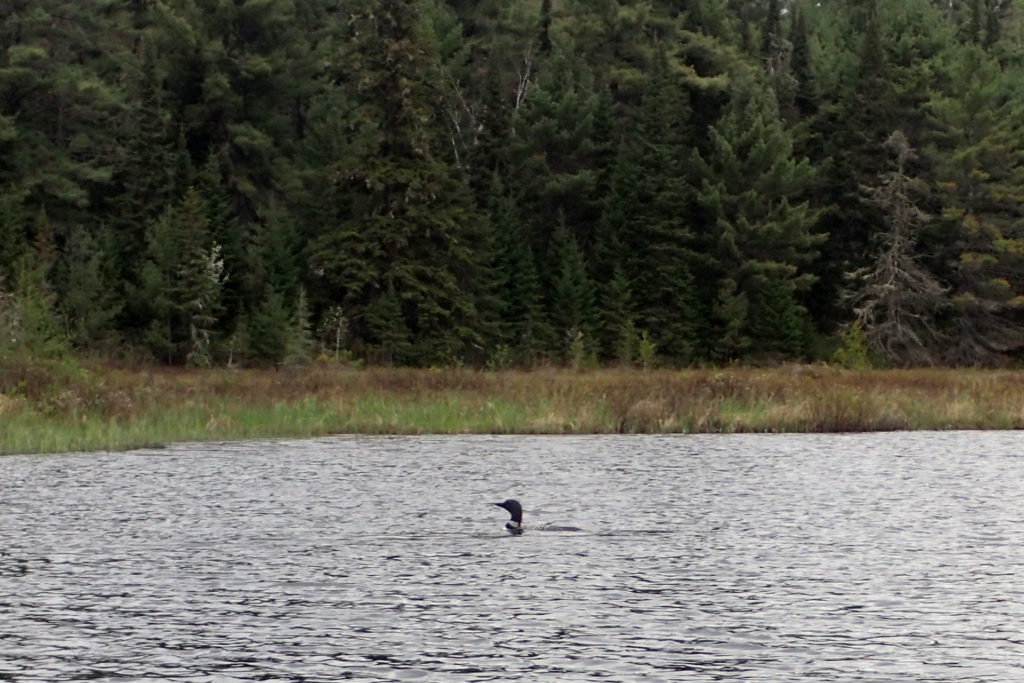
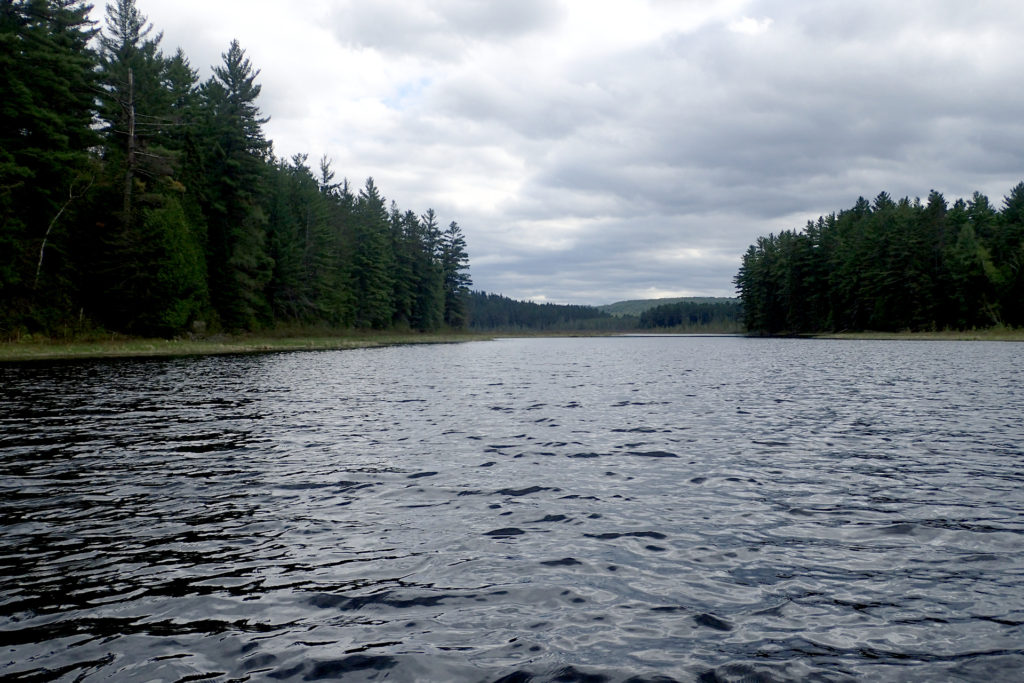
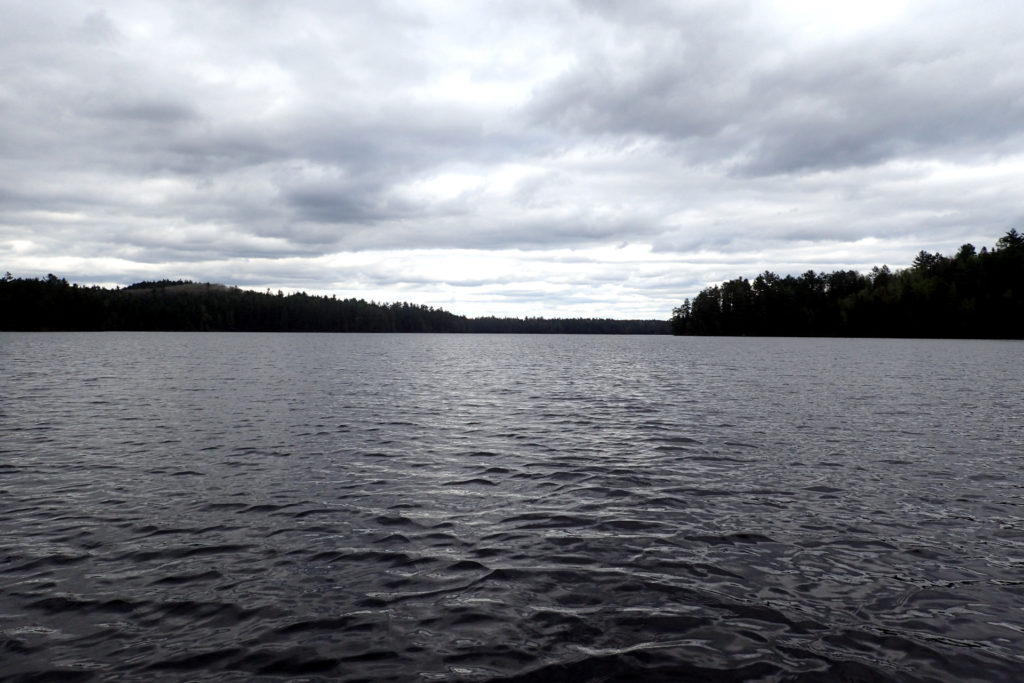
Anxious to get to Lavieille, I didn’t waste any time on Crow Bay and paddled directly through it, finally arriving on Lake Lavieille exactly 1 hour later, at 6:20 pm.
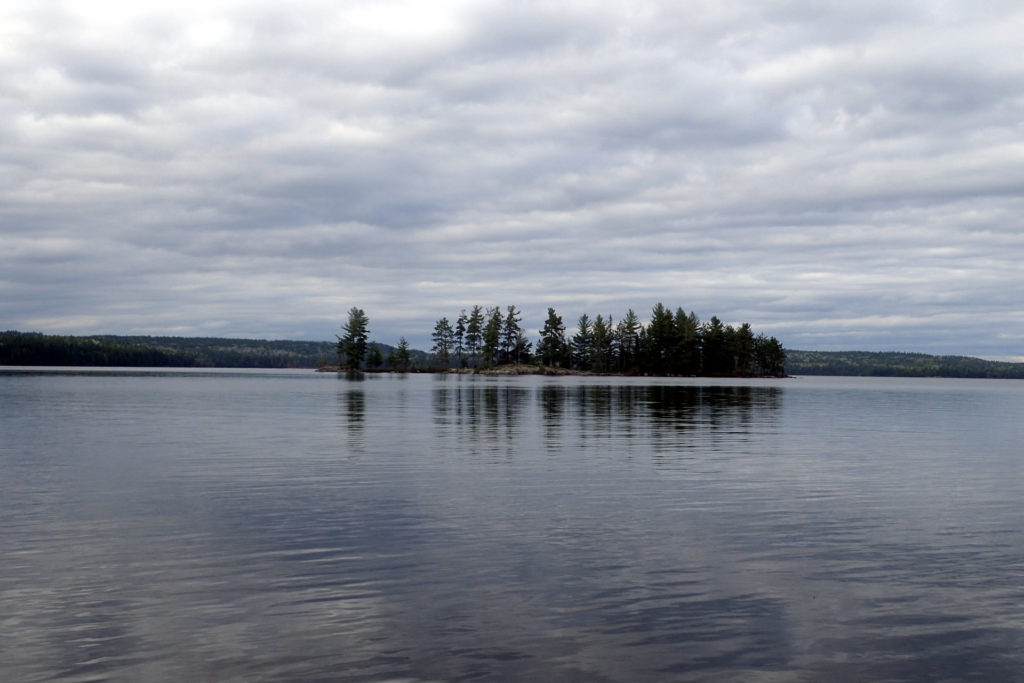
Upon entering Lake Lavieille, I began to understand why it’s regarded as one of the nicer lakes in the park. It feels smaller than it really is, surrounded by rolling hills, dotted with islands and seemingly more protected from the wind than some much smaller lakes (although, over the next couple days, I would find out that it is by no means immune to the effect of wind). Supposedly it has some of the nicest sunsets and sunrises in the park, though I was unfortunately not able to experience that this trip due to weather and storms.
The west side of the lake was especially protected from the winds, and once again I would have been very smart to remain here for this reason – especially given that the wind was about to pickup up substantially over the next couple of days.
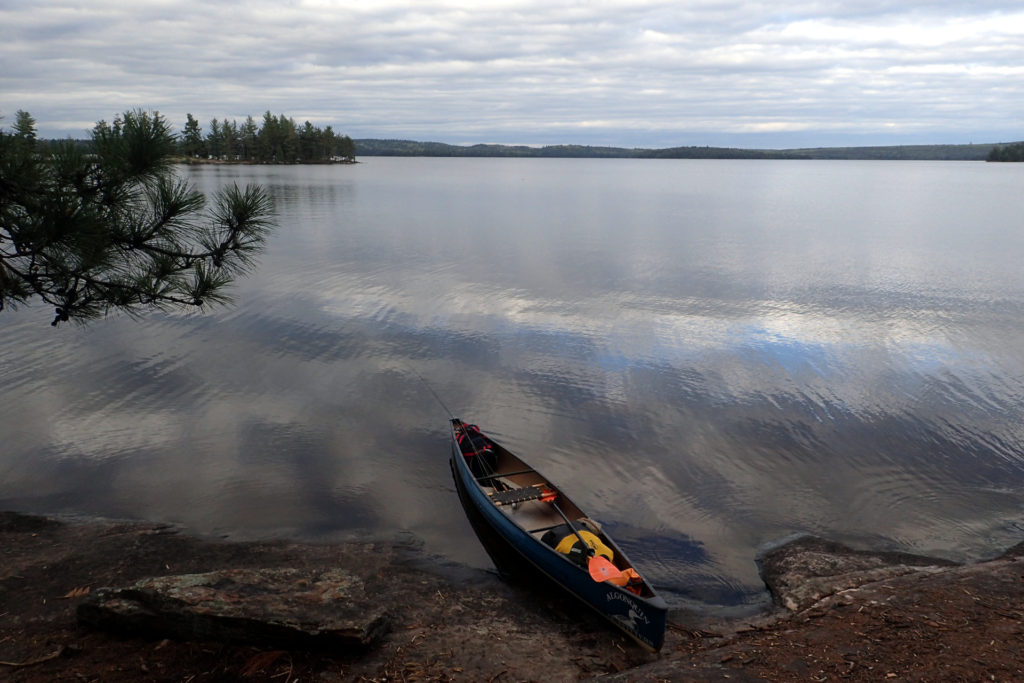
So, against my better judgement (again), because the lake was so calm, I decided to get back in my canoe and make a b-line towards the east end of the lake. I had wanted to stay at the other end of the Lake to allow for some day trips, exploring areas I otherwise wouldn’t be able to (I didn’t want to paddle all the way across the lake for a day trip).
I’d kept fairly close to shore for most of the trip, but given how calm the lake was, I decided to cross it directly and save some time – which took me 50 minutes (far less time than I had budgeted for, but I was running late again). I arrived at the first campsite of interest at 7:30 pm. During my crossing, of course the winds started to pick up a bit (in addition to no longer being protected by the western hills and tree line).
The first campsite I stopped at was decent, but not outstanding. It was getting late, but I wanted the “perfect” campsite if I was going to stay here for 2 straight nights (hint: there is no such thing) – I didn’t want to relocate camp again if I didn’t need to. There were two more campsites within range of me – one on the lake proper and another within a bay off the main lake.
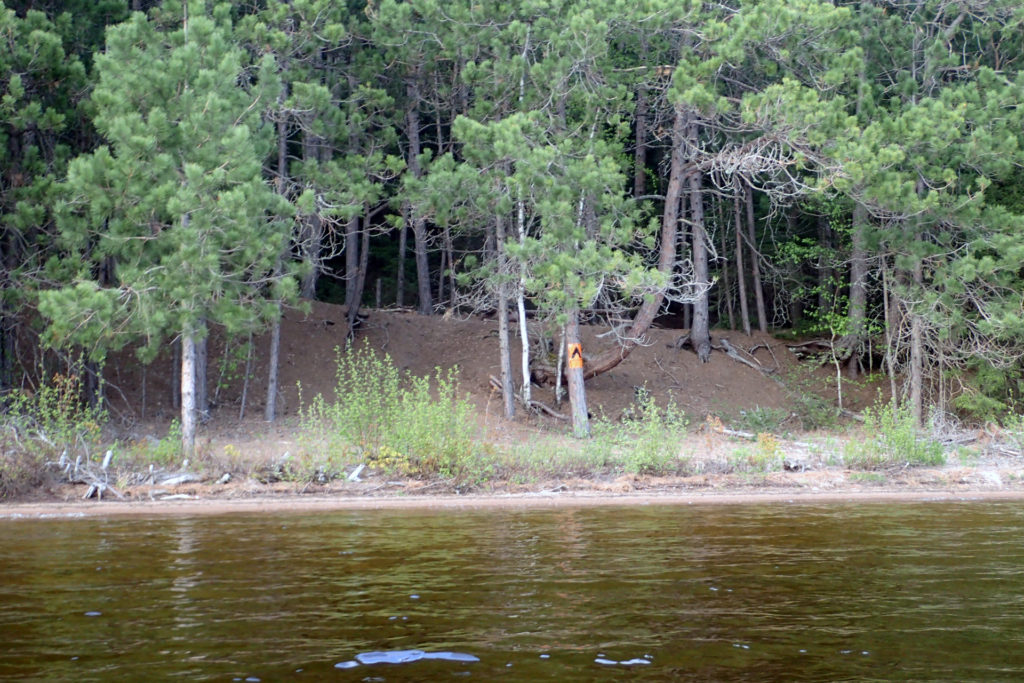
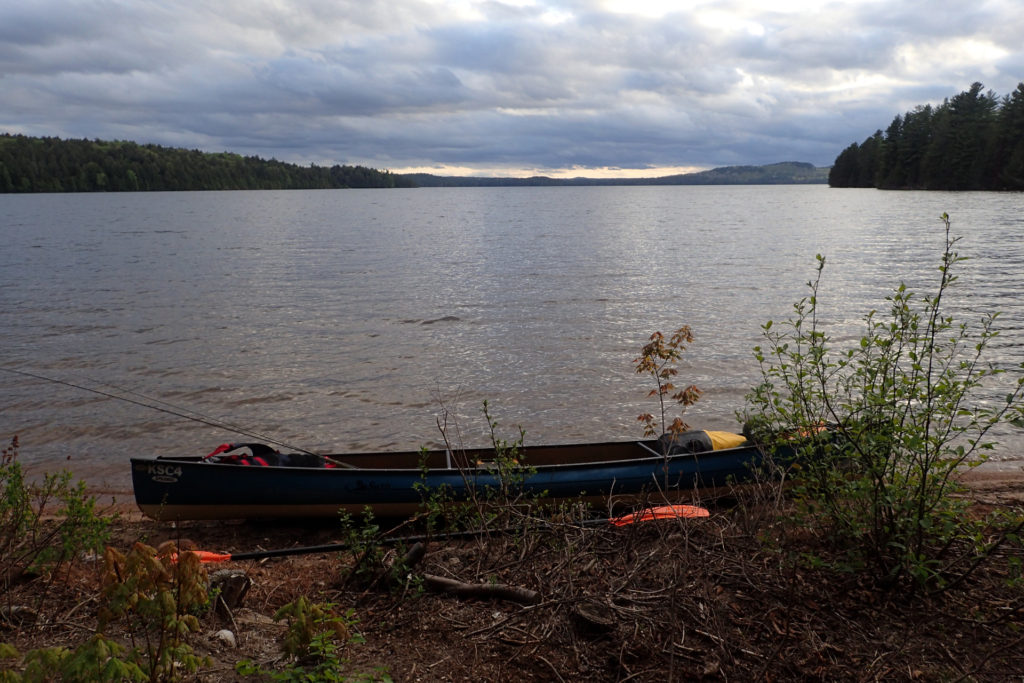
I first headed to the other campsite on Lavieille proper, but it was very exposed to the winds that were picking up. Now 7:30 pm, I got back in the canoe and headed to the last campsite on my list. This site, I figured, should be the most protected of the bunch and also offer a nice jumping off point for some day trip exploring.
I pulled up to the next campsite at 8:00 pm and was greeted by perhaps the worst (and creepiest) campsite of the entire trip. It looked good from afar, with a nice rock landing, but this tiny nook was literally the entire campsite – super small with a fire pit right on the water and virtually no place to put a shelter.
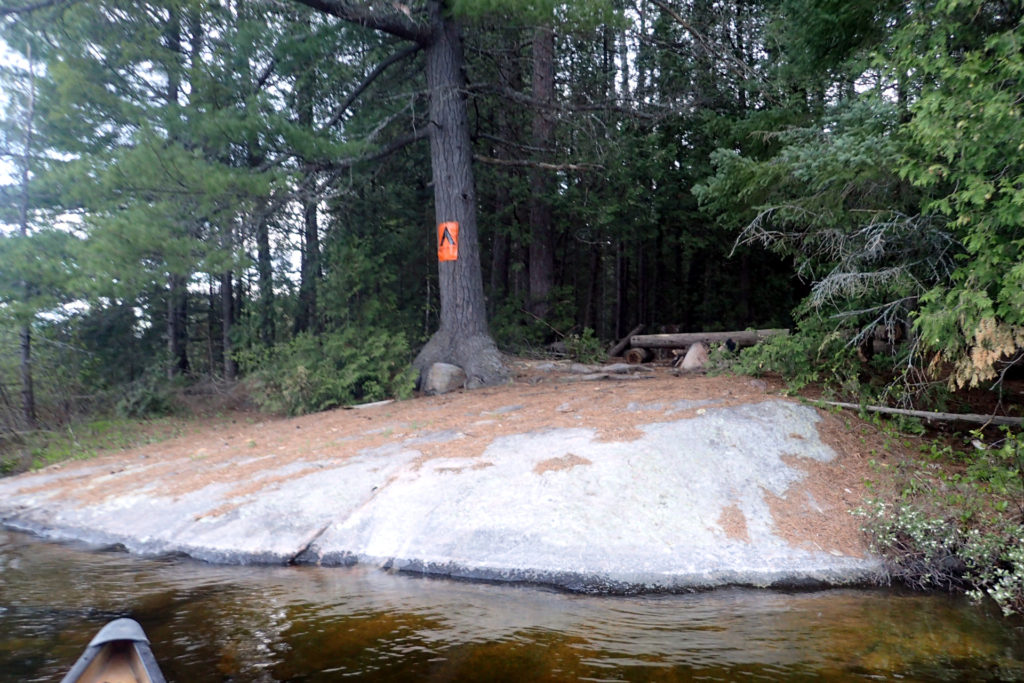
I got out of the canoe and had a look around. This site didn’t have your usual thunder box, but instead a more protected half-outhouse style thunderbox (without a door). It was a nice spot for spiders and other creepy crawlies to hang out in. Right beside it, was something even more creepy: a comfy looking “den” of sorts.
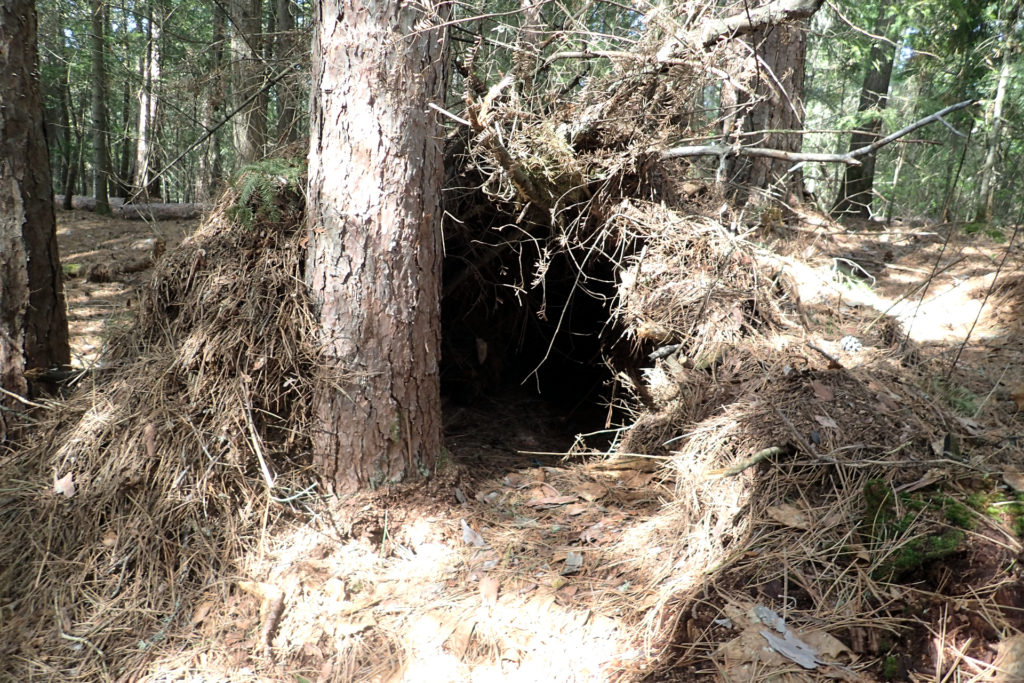
I don’t know my animal habitats very well, but it certainly looks inviting and comfy for a larger animal. If anyone can identify this, do let me know what you think it is, as I’m curious!
Anyhow, it was getting late and I had to make a decision on where to stay. So, against my better judgement for the nth time, I decided to paddle back up to the more exposed campsite that had much better options for the hammock and just a nicer campsite overall. It was 8:20 pm when I finally arrived.
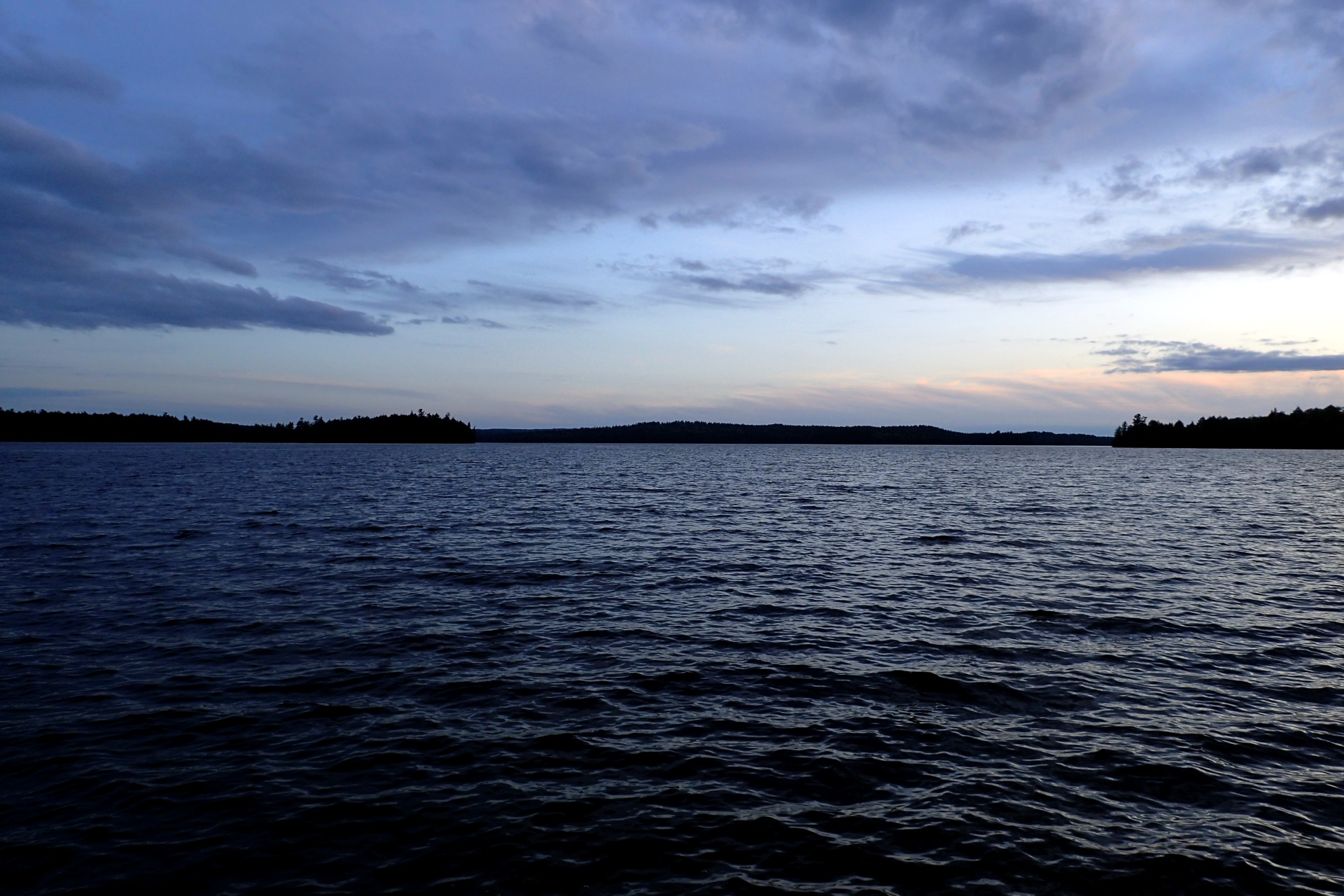
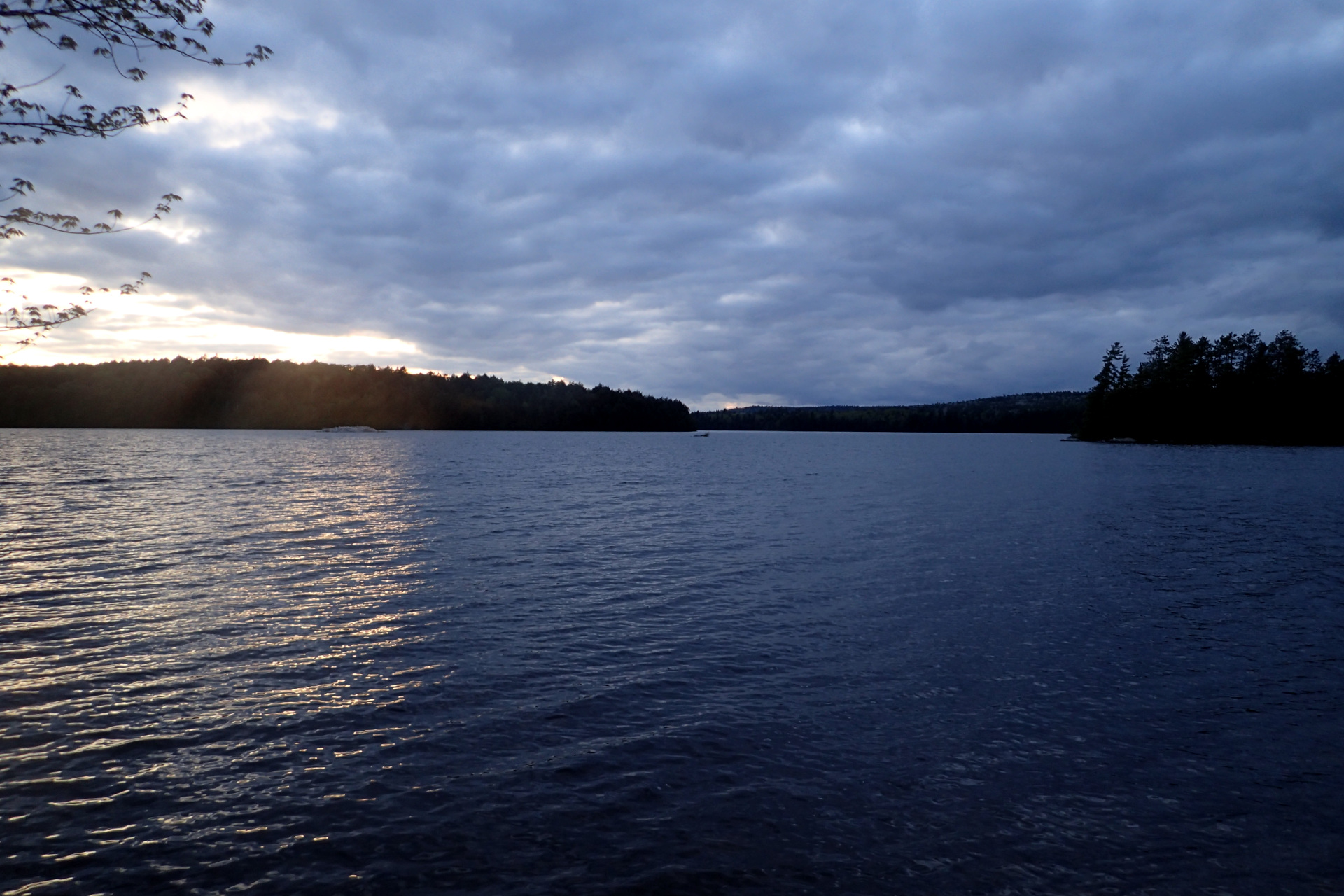
After searching endlessly for a bear hang for the third night in a row, then setting up camp, I had a late dinner and retired for the evening.
Day 4: Wind and More Wind (with a bit of fishing)
When I awoke the next morning, the winds were already picking up. Heavy rain and storms had been in the forecast for this day and I’d been keeping an eye on the weather updates (on my InReach) throughout the week. As the week progressed, the forecast looked better and better, so I was hoping for only limited rain and no storms.
For most of the day, the storms held off, as did most of the rain – but the winds continued to pick up and made my attempts to travel and explore difficult. I sat around camp until about 2:00 pm, hoping to get some break in the wind to head out on a day trip, but that break never came – the winds only intensified. The campsite I was on offered little refuge from the winds and I wasn’t particularly thrilled about having to stay here all day, or having to sleep through such winds or potential storms that were starting to seem more likely.
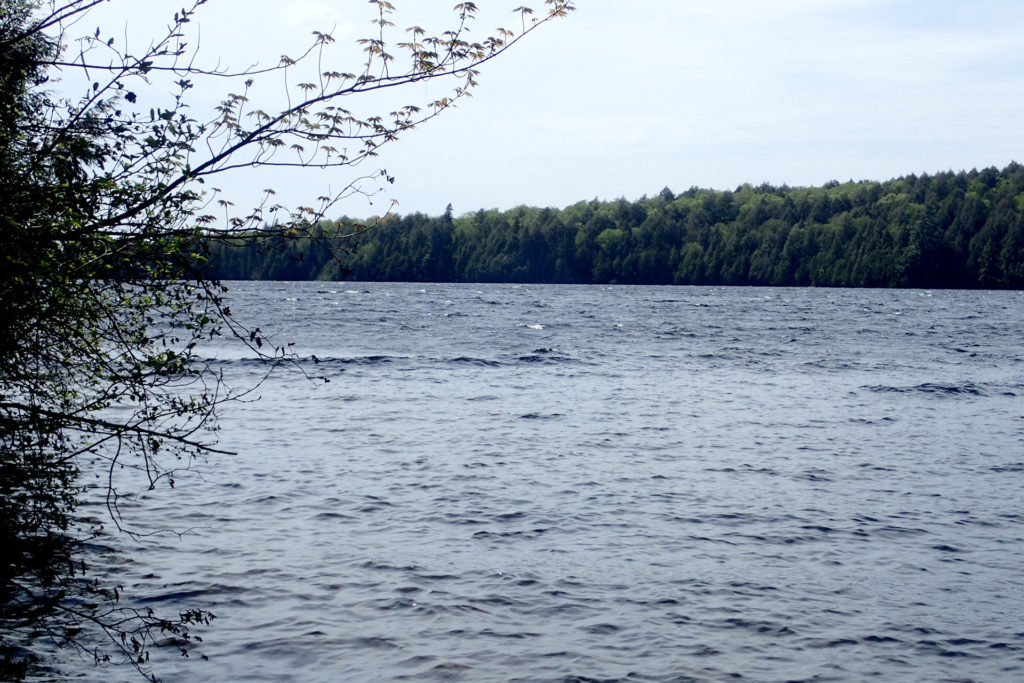
By 4:00, I’d come up with a plan – I would paddle back to the small campsite that I decided to bypass the night before. It was, at the very least, much more sheltered from winds and would offer some easier access to river exploration (which would be much easier to travel in this weather).
I quickly took down camp, loaded the canoe and paddled to the new campsite. Although much calmer than the open lake, there were still some fairly sketchy paddling conditions along the route. When I arrived, I dropped off most of my gear at camp and continued down river to spend at least a couple hours exploring and fishing.
This was the first day I would be in the Keewaydin without all of my gear and I quickly realized when I got into it and attempted to paddle away, that a 15′ Keewaydin without much gear/weight on a windy river/lake is a recipe for disaster. So back to the site I went to load the canoe with some heavy logs to add some stability.
Paddling conditions improved as I paddled further from the lake proper, with narrowing river and trees offering more refuge from the winds. There were however several extremely large rocks that were waiting just under the surface of the otherwise deep channel – one of which snuck up on me and I managed to partially beach my canoe on.
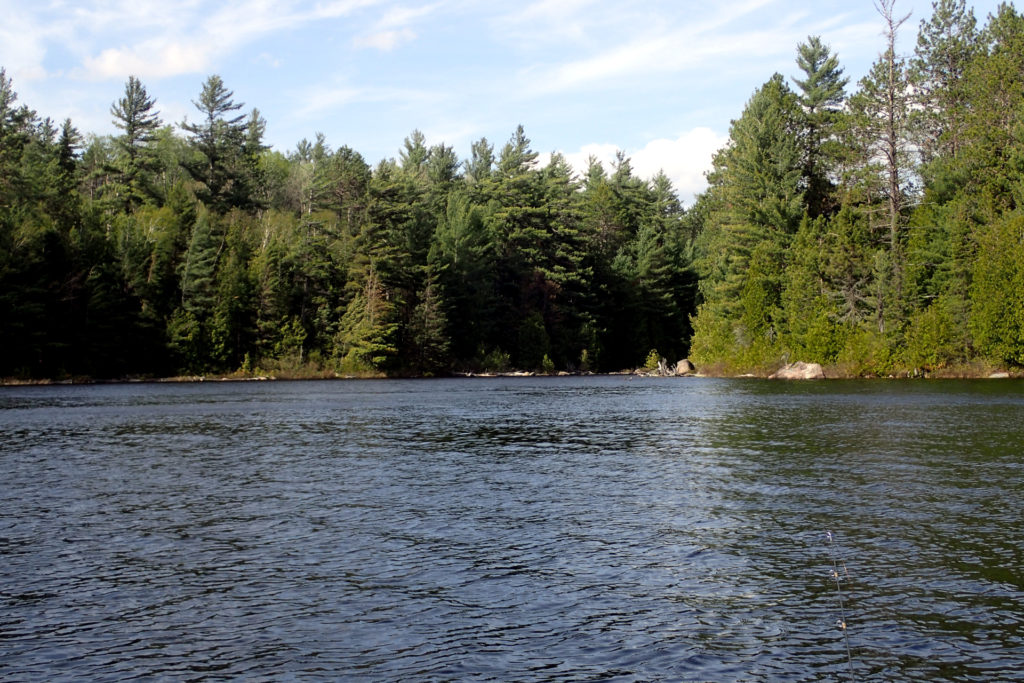
It was close to 5:30 when I found some fishy looking water – and it didn’t take long before I started hooking into brookies. I was throwing small to mid sized streamers between size 6-10 with my 3-weight (because, as you recall, I busted my 6-weight). Mickey Finns were getting the job done, with a couple quick smaller brookies, after which the action slowed down a bit.
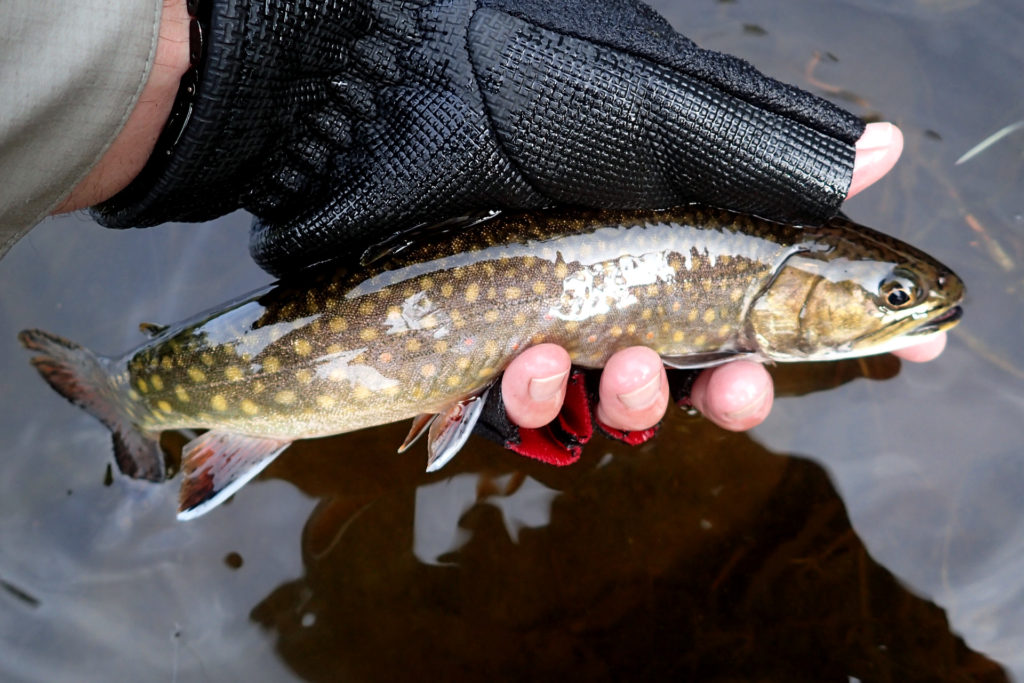
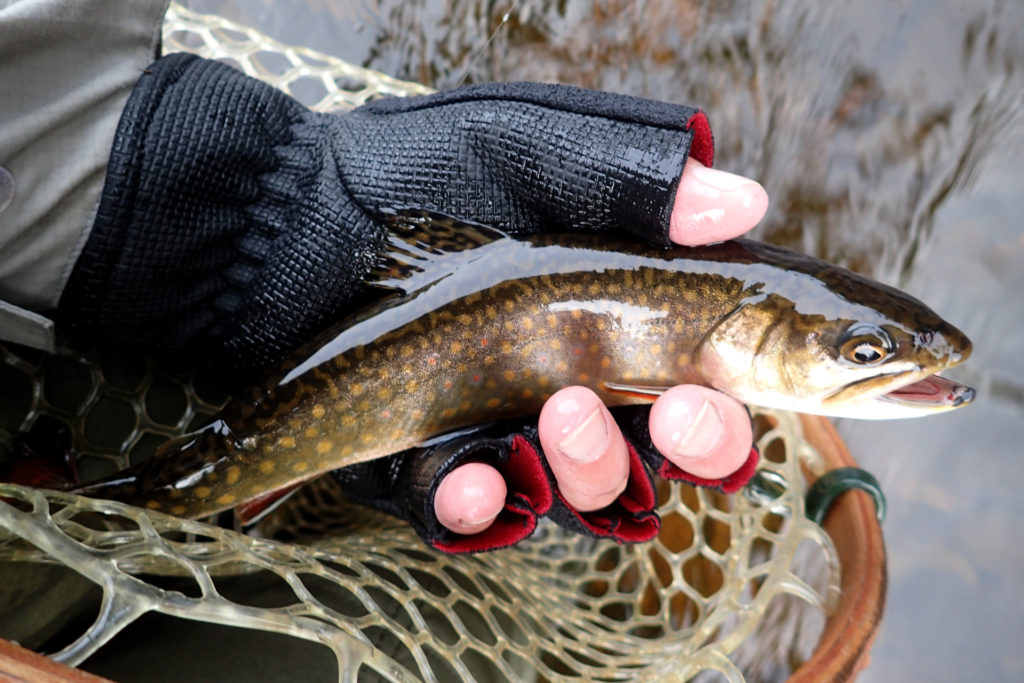
I changed flies to a marabou muddler, which I’d tied only one of (out of the couple dozen flies I tied for the trip). The first cast with this fly produced my best brookie of the trip – certainly not a giant, though it would be considered one for the rivers back home. It continued to produce brookies more reliably than the mickey finn – which could have been the flie’s doing, or my confidence in it.
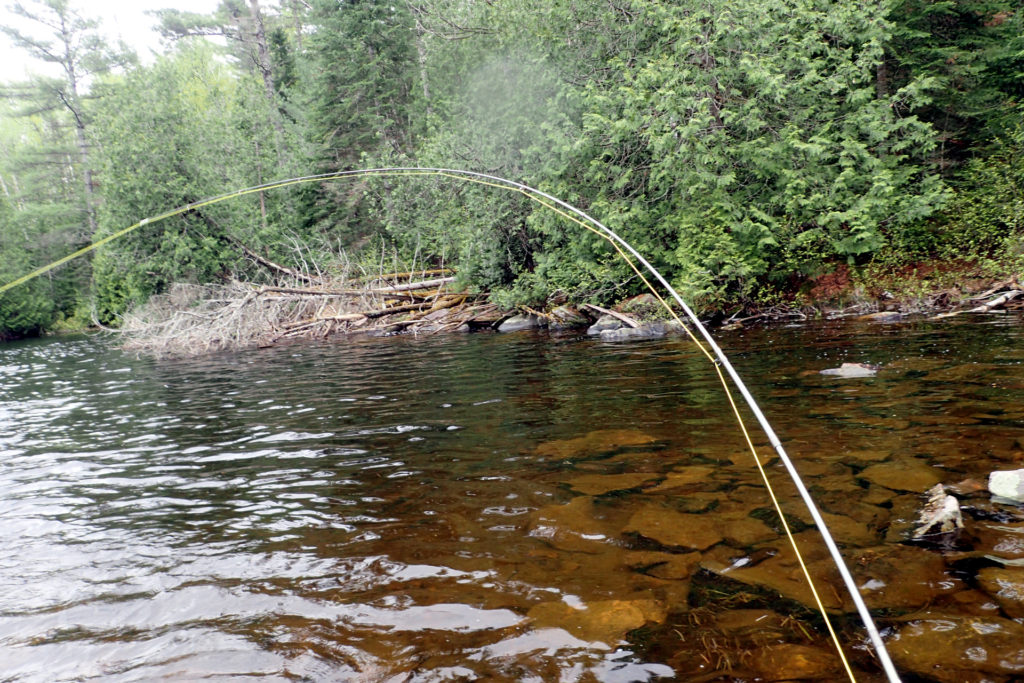
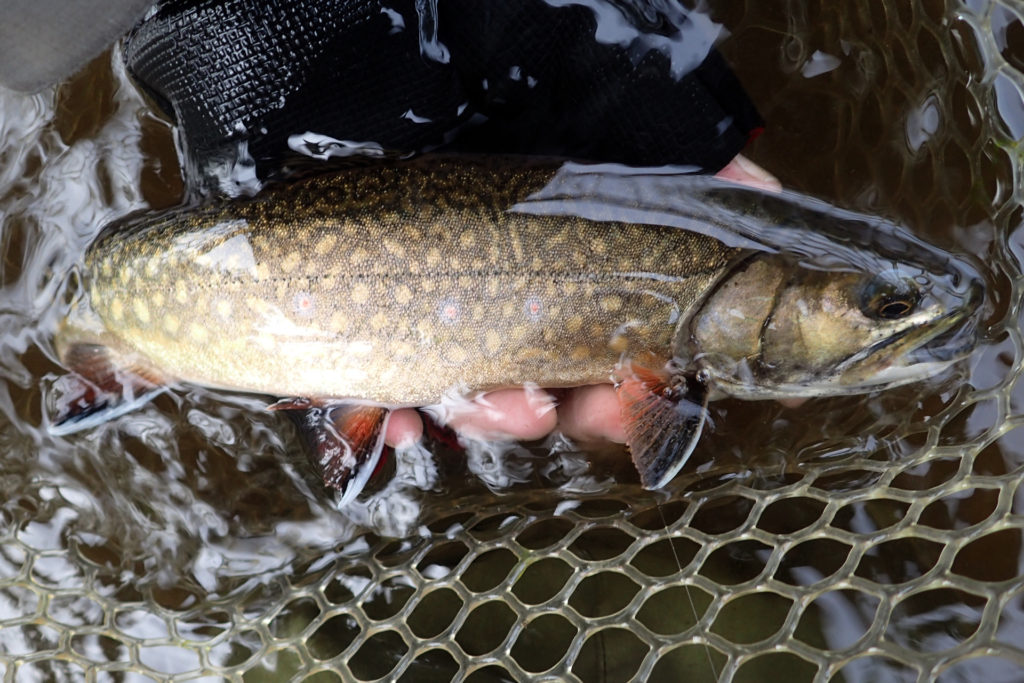
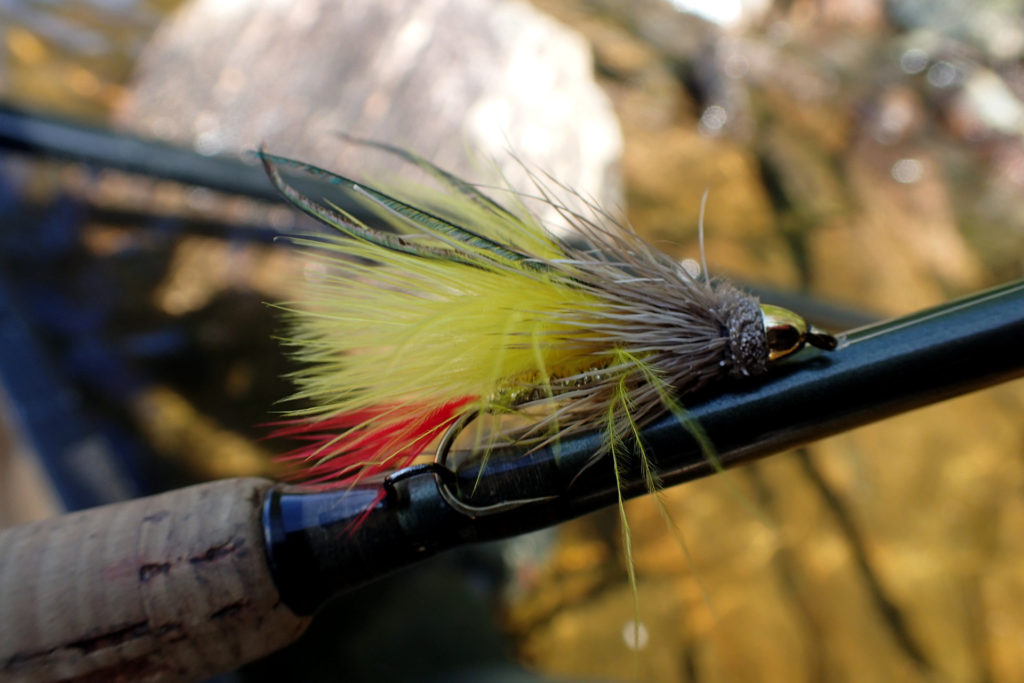
One thing I’ve noticed about Algonquin brookies – not only do they fight harder than the brookies back home, but they are ridiculously spaz when trying to land them. I was glad to have brought a net, because just about every time I tried to land one without the net, I lost it. There were a couple good brookies that I got to my feet but didn’t have the net on me and the (barbless) hook popped out when trying to grab them for a quick pic. They simply will not stop jumping and squirming… they don’t give up.
The Storms…
After some successful fishing, I headed back to camp under what was looking like darker skies. I still had to setup the hammock (and try to find a spot to hang it) and finish other camp chores.
By the time I finished dinner and had my hammock hung, the rain started – followed by thunder – followed by the most intense storm I’ve ever camped in. I was immensely happy to have relocated my camp to this more sheltered location, with much smaller and healthier trees. Miraculously, I slept dry in the hammock that night, albeit with very little sleep due to the lightning and thunder that echoed throughout the park in the most spectacular sound and light show I’ve ever witnessed mother nature produce.
As it turns out, this was a significant weather event called a “derecho” (apparently one of the most impactful of these events in Canadian history). Several tornadoes touched down in southern Ontario that night. Again, I was extremely grateful for having decided to camp where I did, as I came out of it dry and unscathed.
Day 5: Lavieille to Dickson
I woke fairly late (9:30 am) due to having very little sleep the night before in the storms. This was to be mostly a travel day, since it was my second last day of the trip – the day before I would be taking on the big Dickson / Bonfield portage. I’d be paddling from my current campsite, down all of Lake Lavieille, and through most of Dickson Lake, to give myself an early start on the portage the next day.
The water was fairly calm in the morning, as is usually the case after a big storm. Before heading across Lavieille, I decided to take a quick detour for some last minute fishing. It turned out to be a good idea, as I landed several more brook trout in about an hour and a half of fishing – which would turn out to be my last of the trip.
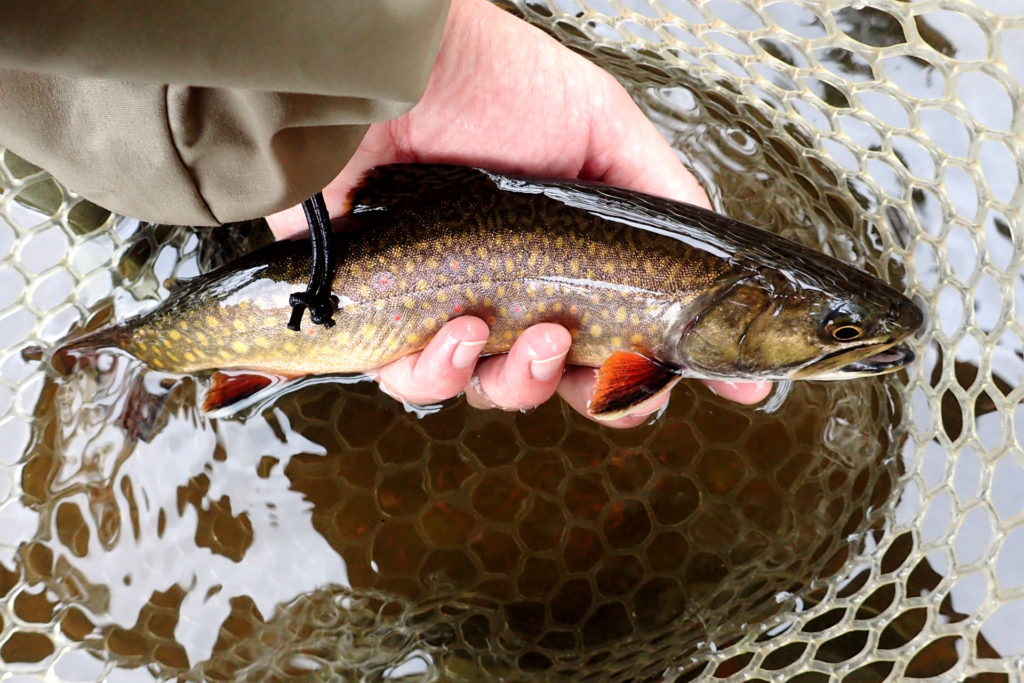
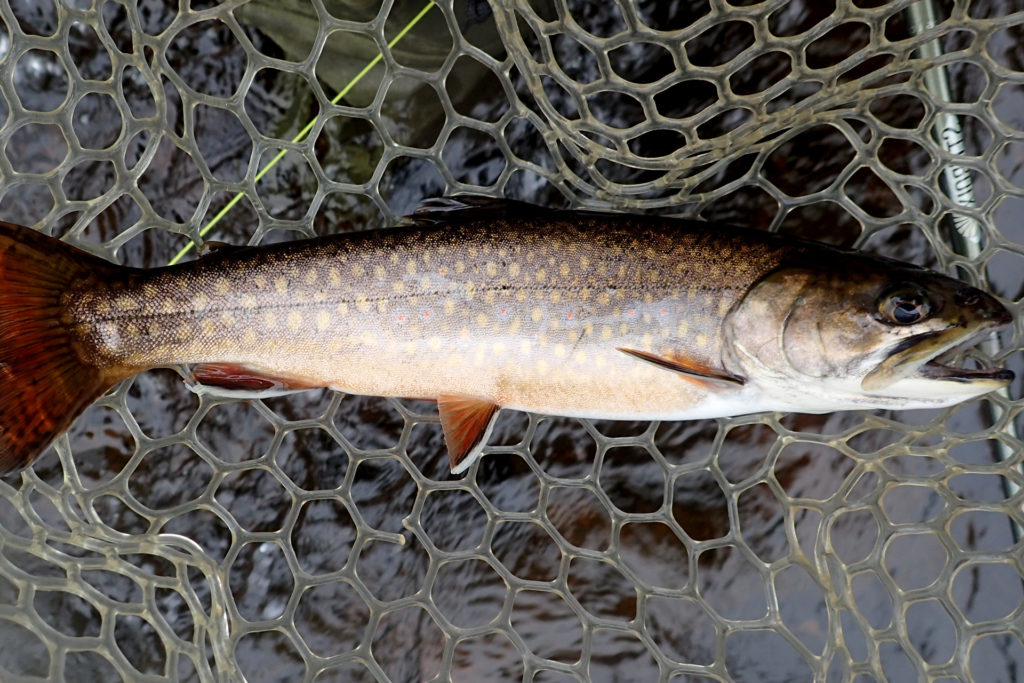
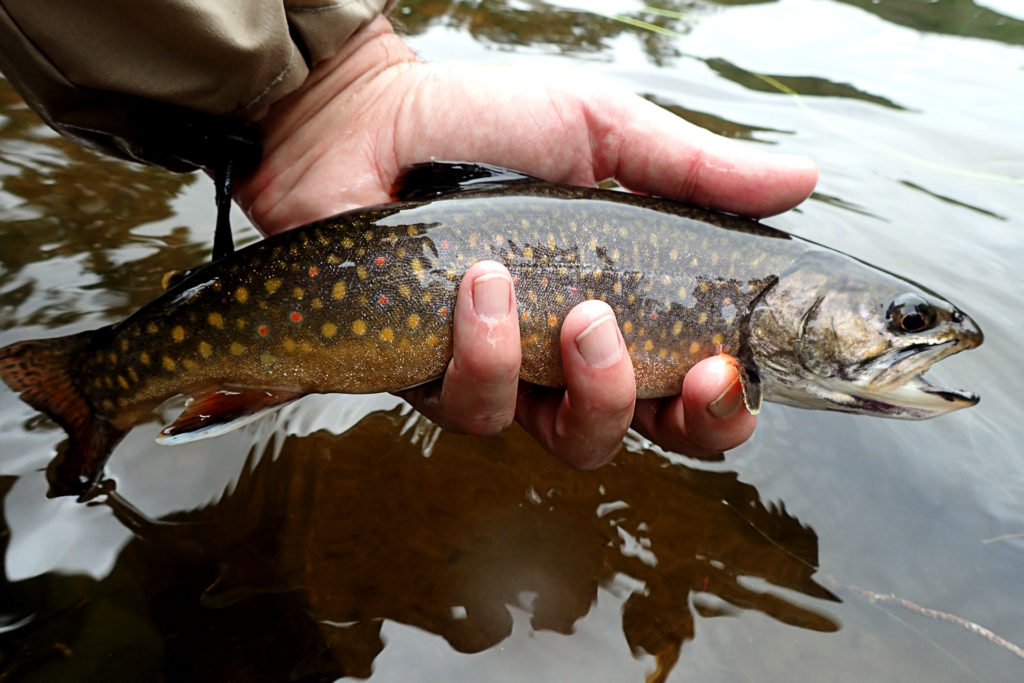
It was around 2:30 by the time I made it back to the open water on Lake Lavieille. The winds were once again working against me and were considerably more significant than I expected. Nothing difficult to manage, but it made travel fairly exhausting and slow.
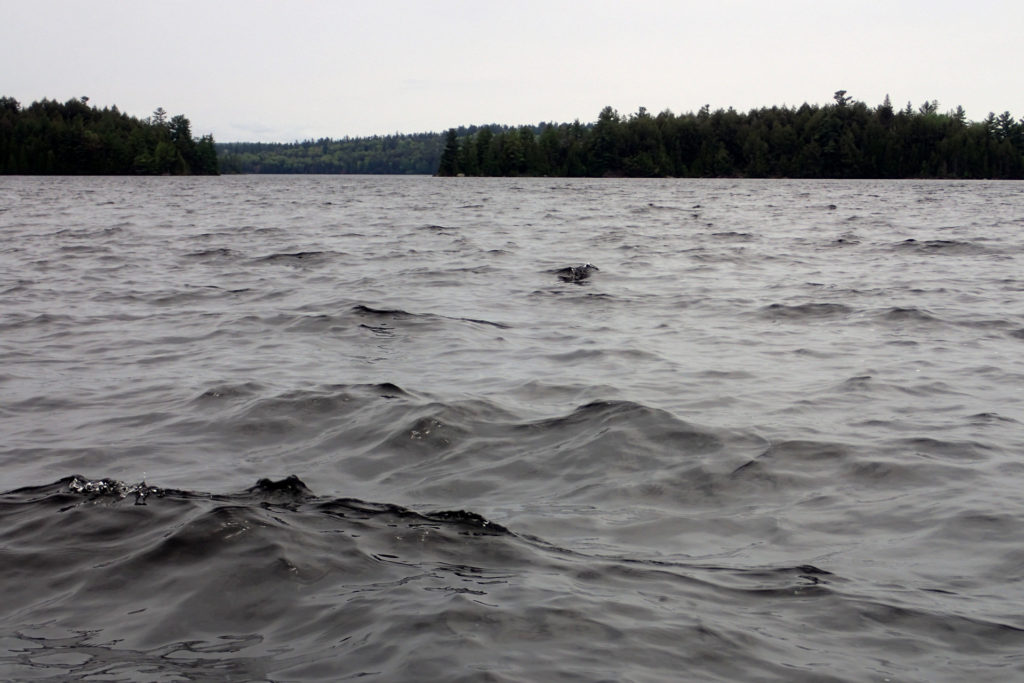
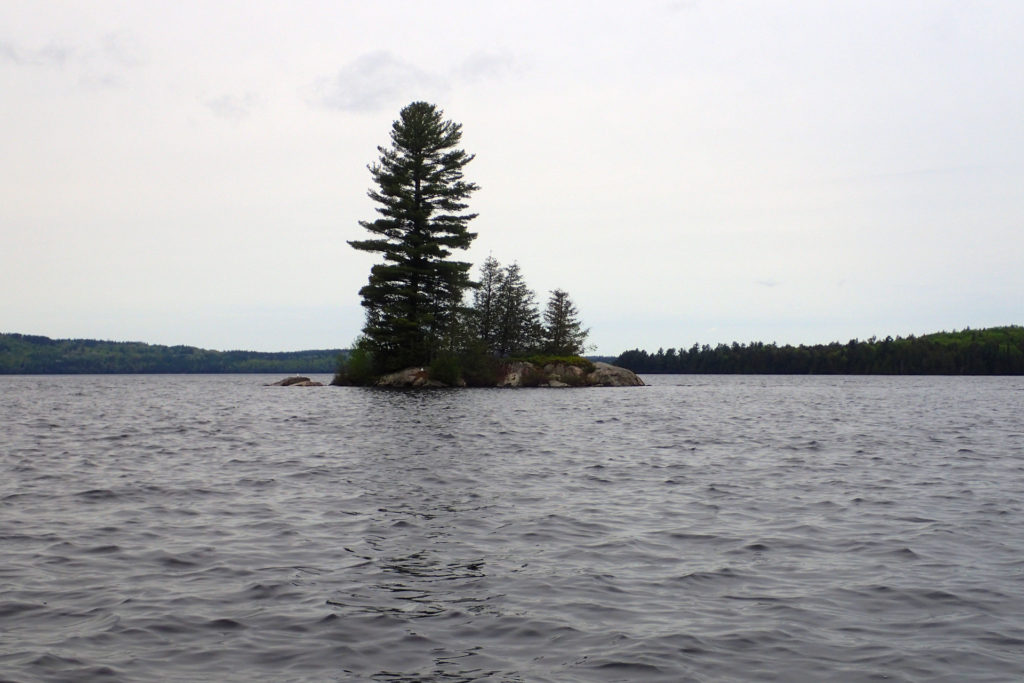
One of the nice things about paddling Lavieille, is the many islands and sheltered bays it has. Even in windy conditions, it’s often fairly easy to find a route that has you paddling along the sheltered side of an island or bay.
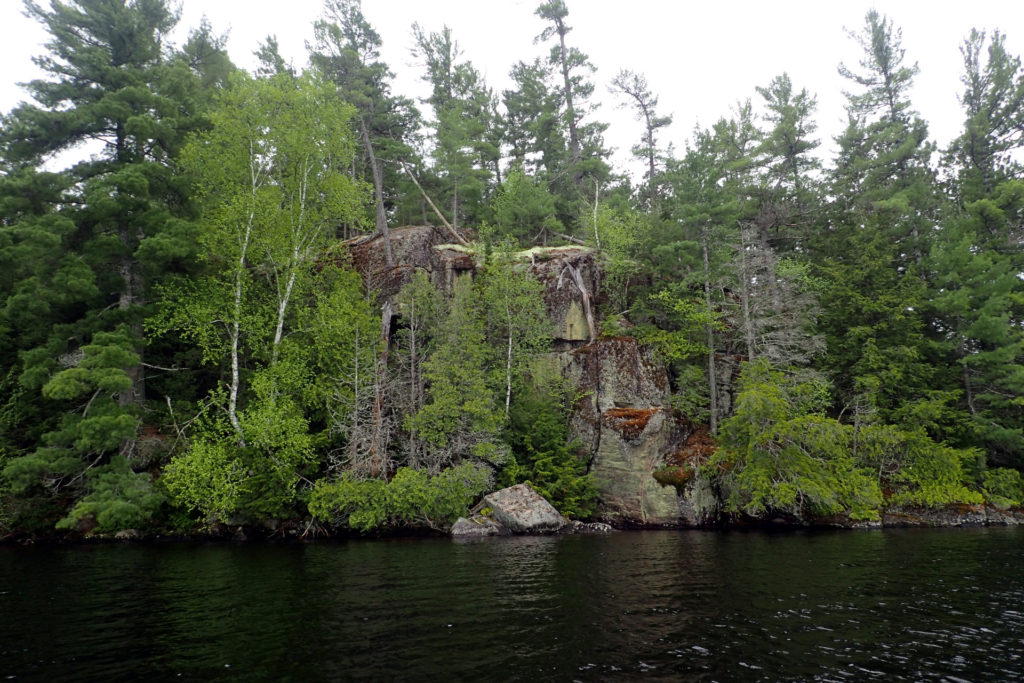
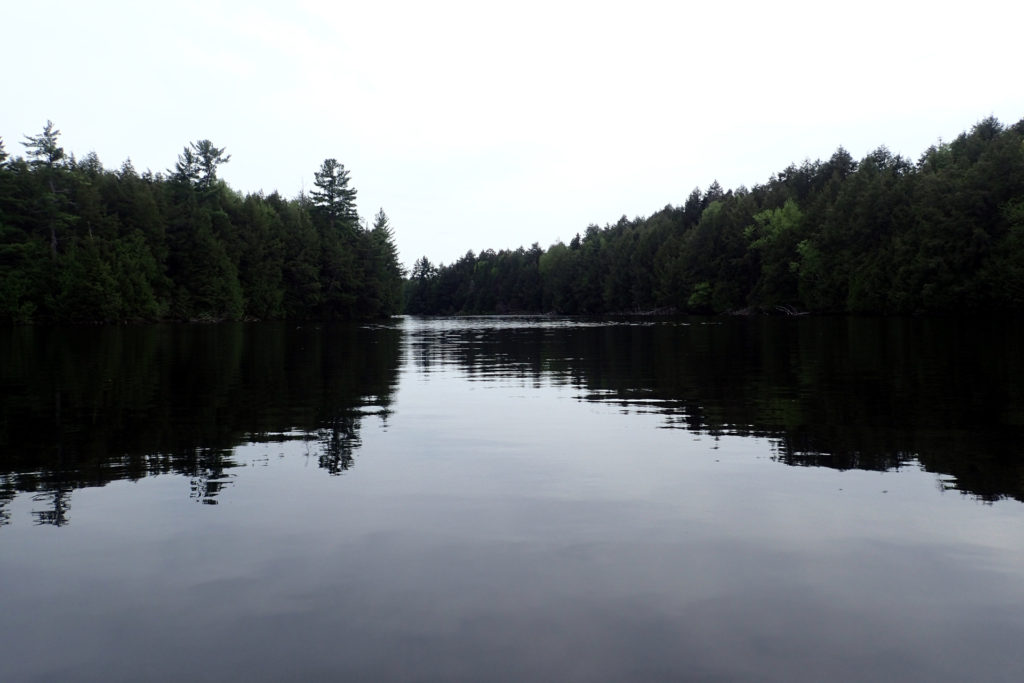
I reached the tiny 90m portage between Lavieille and Dickson at around 3:40 pm. There’s a neat, super tiny stream that connects the two large lakes, which can be seen below dumping into Lavieille. In low water, it can be reduced to a mere trickle.
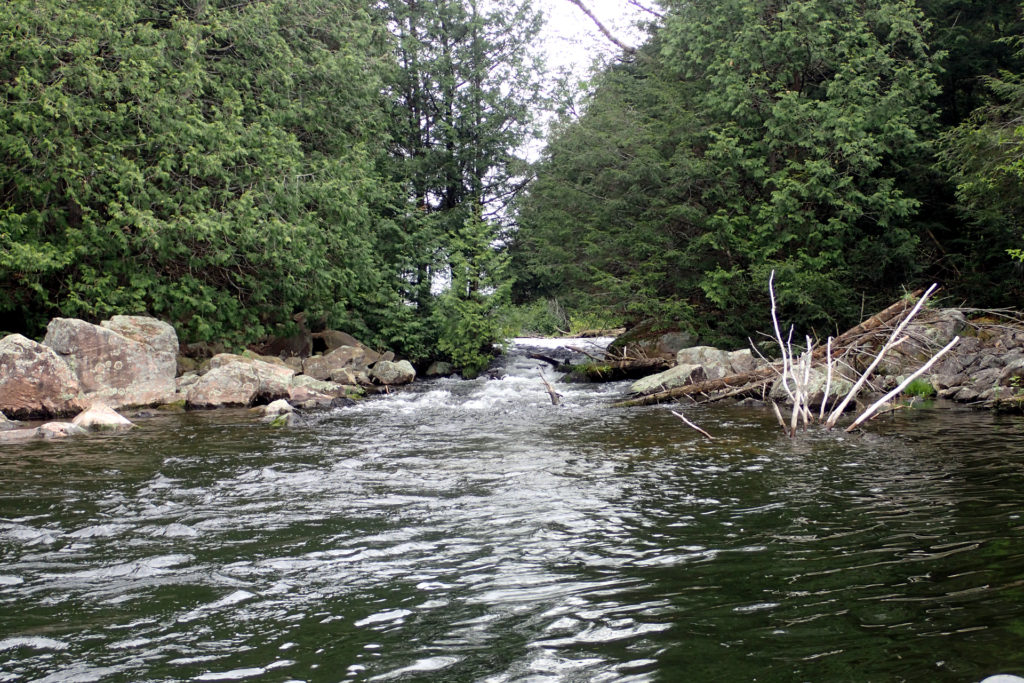
Dickson Lake was fairly uneventful. It’s a pretty lake and it was mostly empty, aside from one group of teenagers who were staying at one of the campsites close to the Dickson / Bonfield portage. I’d like to return and spend a bit more time on this lake in the future, as I think it’s been mostly ignored over the past several years – thanks largely to the fact that it was closed for camping due to a blue-green algae outbreak (which is no longer present).
It was just after 6:00 pm when I arrived at the last campsite before the portage. It looked like a relatively well used campsite, but was quite nice, with a decent table, bench and fire pit – and lots of open areas to pitch a tent or hang a hammock.
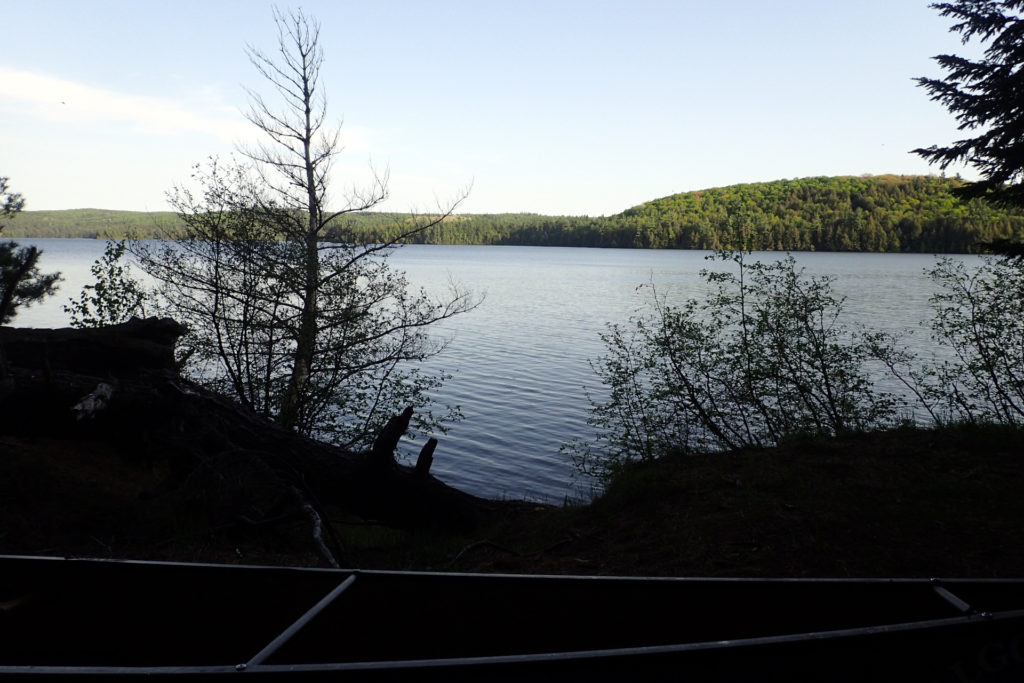
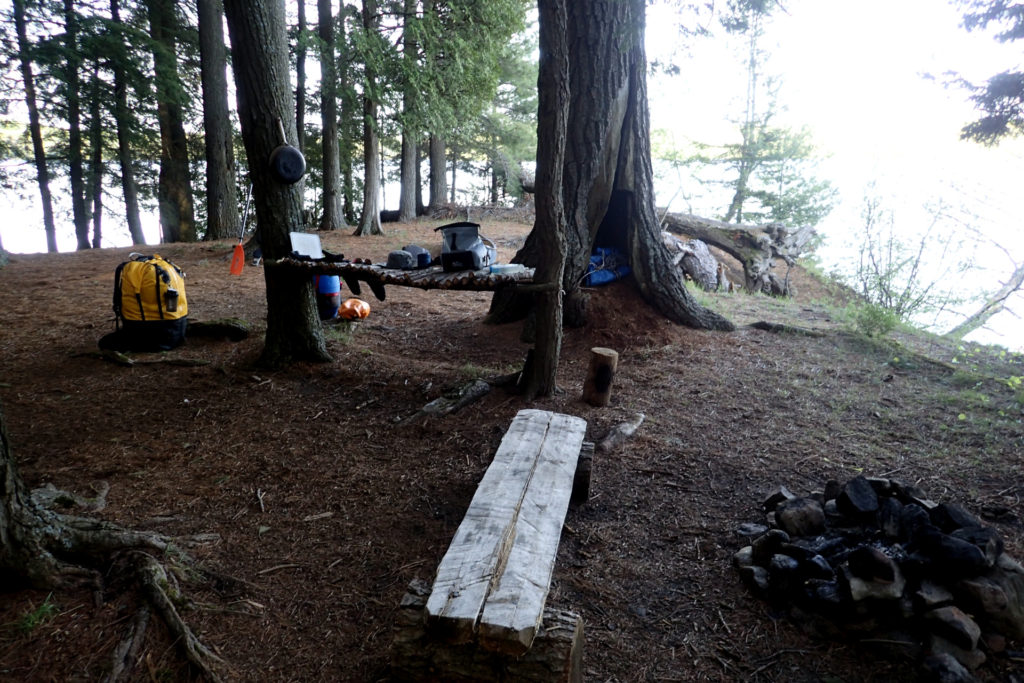
I sat by the fire for quite a while this night, relaxing while listening to the (extremely loud) songs of the loons.
Day 6 – The Portage from Hell (times three)
I awoke well rested on my last morning. The winds were calm and the skies were overcast. Rain was in the forecast for most of the day (of course: it always is on my first and last days) – though I wasn’t complaining, because at some point during the last couple of days, the black flies had obtained their appetite and had been feasting fairly heavily upon any exposed flesh they could find. The rain should at least help keep them at bay during the super long portage.
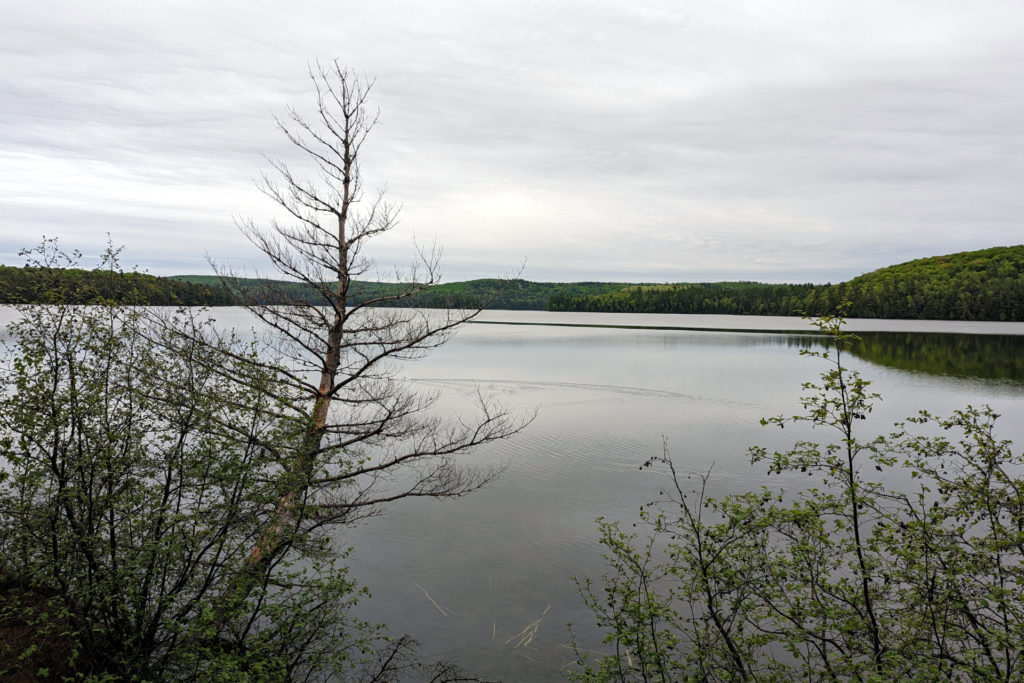
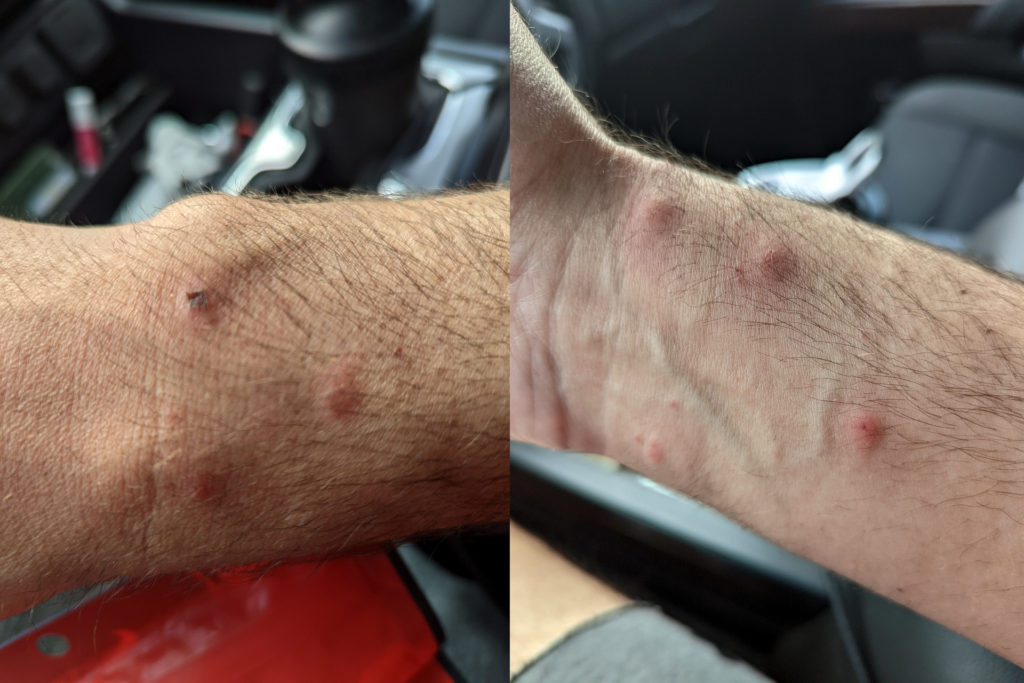
During my morning breakfast, I could hear some splashing in the shallow bay beside my campsite. I ignored it for quite a while, as I just assumed it was ducks or some other bird splashing in the water. When it got louder, I went over to take a look and saw a couple moose – a mother and baby, right next to my campsite. I grabbed the camera and took some video until they eventually heard/saw me and took off. When I went to hit the stop recording button, I noticed I hadn’t even started recording! How many times have we all done that? It was the only moose I saw on the entire trip and I managed to completely botch capturing it…
After packing up, before the rain started, I did a bit of fishing on the very short paddle over to the start of the portage. I caught nothing (as expected) and I wasted far more time than I should have (more on that soon).
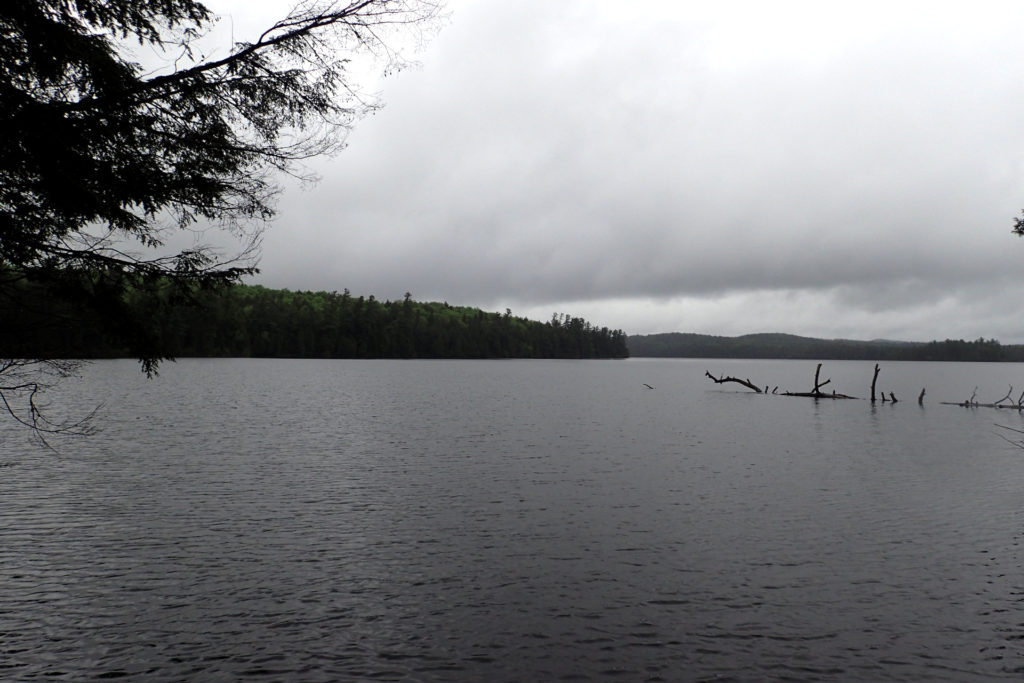
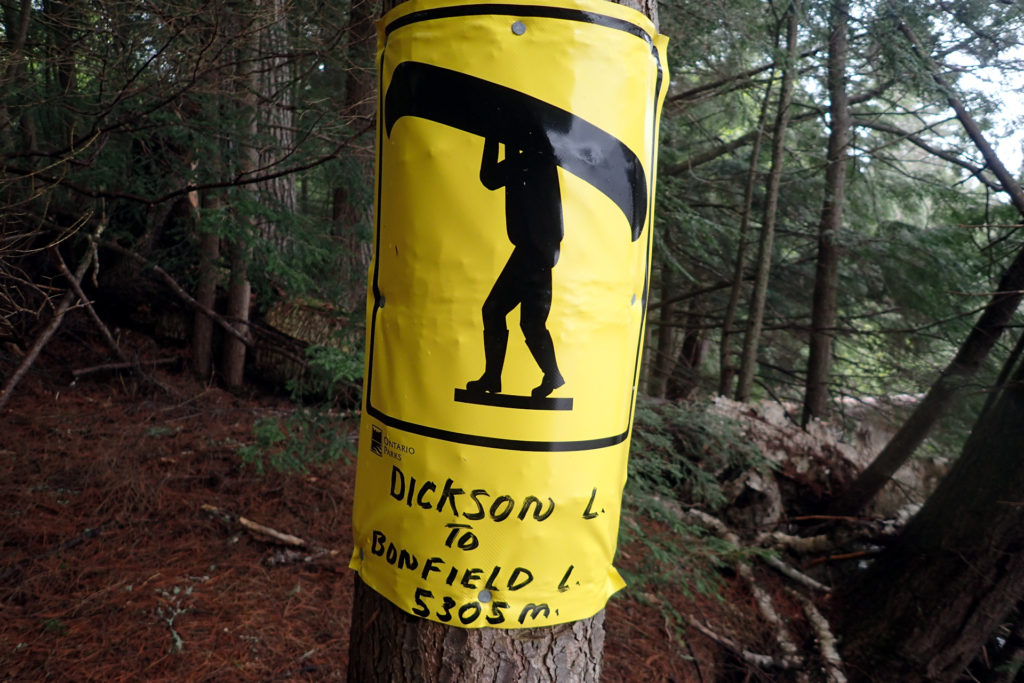
At the start of the portage, I spent a good half an hour messing with my gear to try and attempt a single carry. I figured, with the weight saved from all the food I ate, I should be able to re-arrange things to attempt a heavy single carry.
The problem was that I was transporting a large 115L pack, plus a small food barrel and a couple other bags (30L dry bag and well loaded hip pack). I tried lashing my empty food barrel and a smaller lightweight bag to the canoe – with the 115L pack on my back and hip pack around my waist. I set off on my attempted single carry at about 12:30.
It lasted about 500 meters before my shoulders and neck told me it wasn’t going to happen. There was just too much going on – too much weight on the shoulders and too difficult to balance. So at about 12:45, I dropped the canoe and food barrel on the side of the portage trail and continued the rest of ~5 km with just my 115L pack and waist pack.
There was one problem… I had a scheduled water taxi at the east arm of Opeongo for 5:30 – which left me a little over 4 hours to complete the double carry of this portage, plus paddle and portage across both Bonfield and Wright lakes. It felt like a decent amount of time, but it really wasn’t. Completing Bonfield and Wright can take close to 1.5 hours alone, leaving at most 3 hours to complete the double carry (including breaks).
Still, it wasn’t until I reached Bonfield with the first load and checked the time – 2:00 pm, that I realized at that pace, I was going to be cutting it extremely close – possibly missing my water taxi. To make matters worse, I had actually dumped ALL of my water at the start of the portage to shed as much weight as possible to complete the failed single carry – thinking that in the worst case, I could fill up at Bonfield lake even if I had to do the double carry. But it turned out, Bonfield was pretty much a marsh/swamp, with some fairly undrinkable looking water (even with a filter). I’m sure I could have drank it had I really needed it, but I decided to wait until Wright Lake instead.
After a quick protein break at Bonfield, I began my (empty) walk back towards the start of the portage to get my canoe and food barrel. I found myself jogging part of it, trying to make up for lost time. It was 2:50 when I got back to the canoe, which was close to the start of the portage. That worked out to just under 40 minutes to complete the bulk of the walk back without any gear (and jogging part of it). What is absolutely insane, is that according to Kevin Callan, the record time for completing the portage is around 42 minutes – and he completed it in 46 minutes once upon a time. I’m not sure how much gear those times were completed with, but considering I half jogged the trail with no gear and it took nearly 40 minutes, that is very impressive (and hard to believe)!
I took another small break when I reached the canoe – then set off with the canoe and food barrel, at a fairly fast pace. I finally reached Bonfield with all of my gear at about 4:00 pm. I swore at that moment, that I would:
- Never, ever, double carry the Dickson / Bonfield portage again, no matter what
- Even if single carrying, allocate more than enough time to take breaks and make the carry more enjoyable
- Bring plenty of water – even if it means carrying more weight
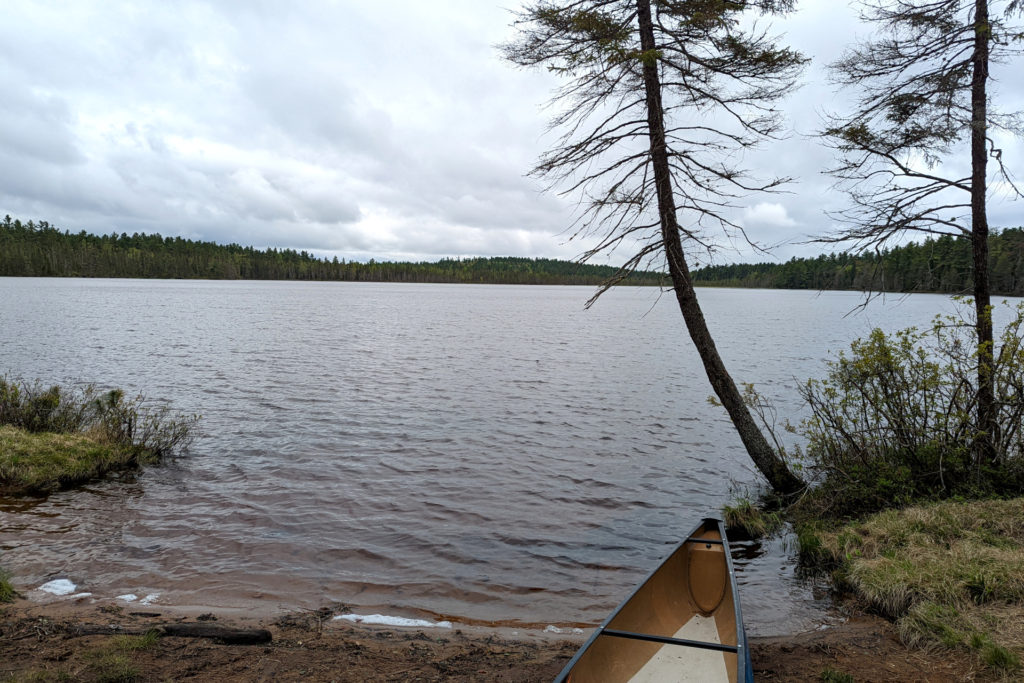
The paddle across Bonfield and then Wright (with a 260m portage in between) was fairly uneventful, except for the rain and reward of finally being able to gather some water at Wright Lake.
It was 5:00 pm when I started the final 285m portage from Wright Lake to Opeongo – more than enough time to arrive at the other side in time for my water taxi! But, like the good folks at Algonquin Outfitters often do, the driver had arrived early and ended up meeting me half way down the portage. He graciously offered to take my canoe and food barrel the last half of the way, while I went back to get the rest of my gear. We were loaded up and ready for the ride back at 5:15 – and I was back at home in time to celebrate my younger son’s 13th birthday.
I think it’s impossible to undertake a trip like this, especially solo, without some unexpected surprises, challenges and amazing memories. This was certainly one of those cases – and while this was a fairly lengthy recollection of the trip, it’s impossible to cover all of the hiccups and surprises along the way.
I find there’s a real sense of emptiness after completing long and challenging backcountry trip. As much as you miss your family, friends and comforts of home, the mind can’t hep but wander off into the endless possibilities that the wilderness provides.
